
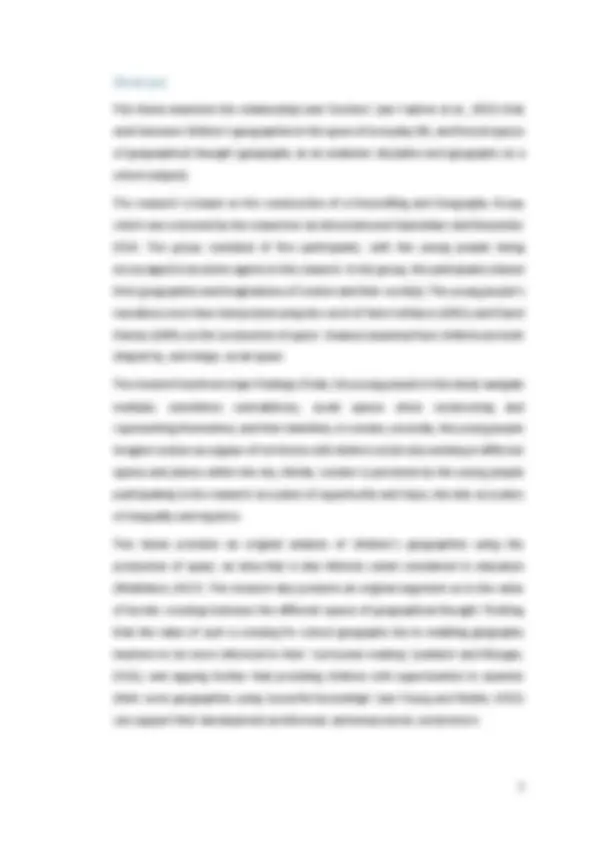
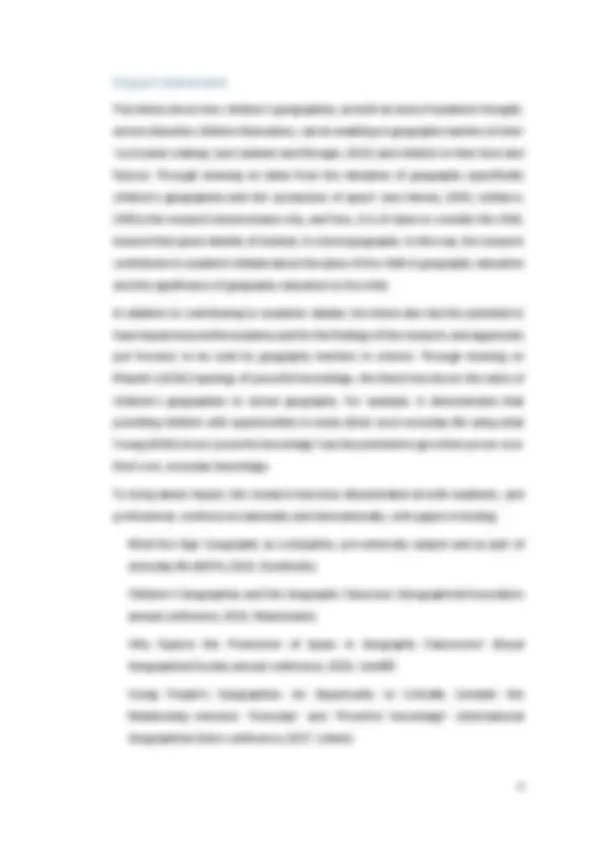

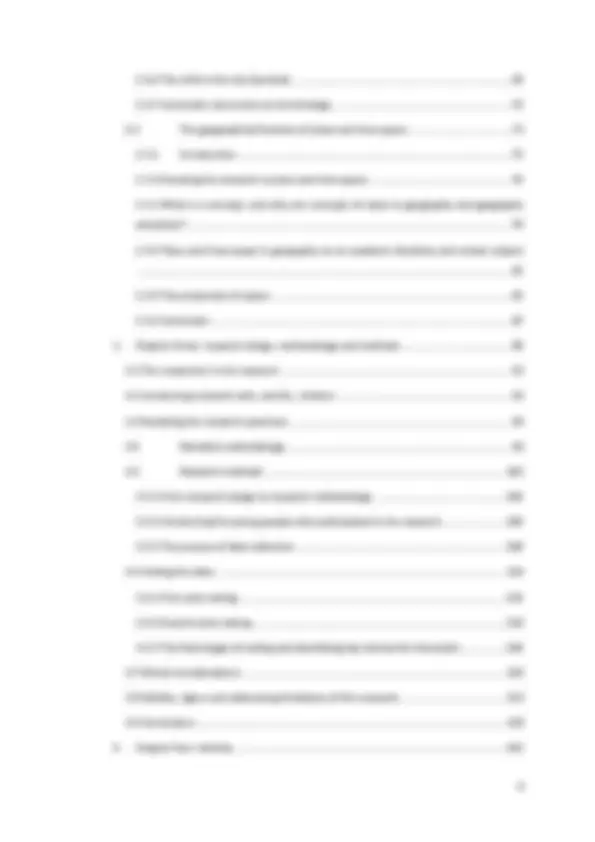
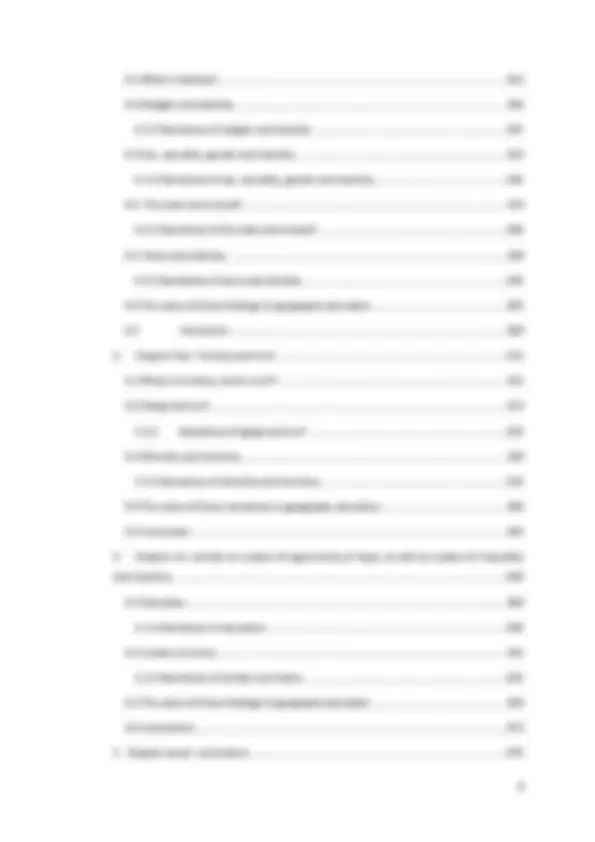

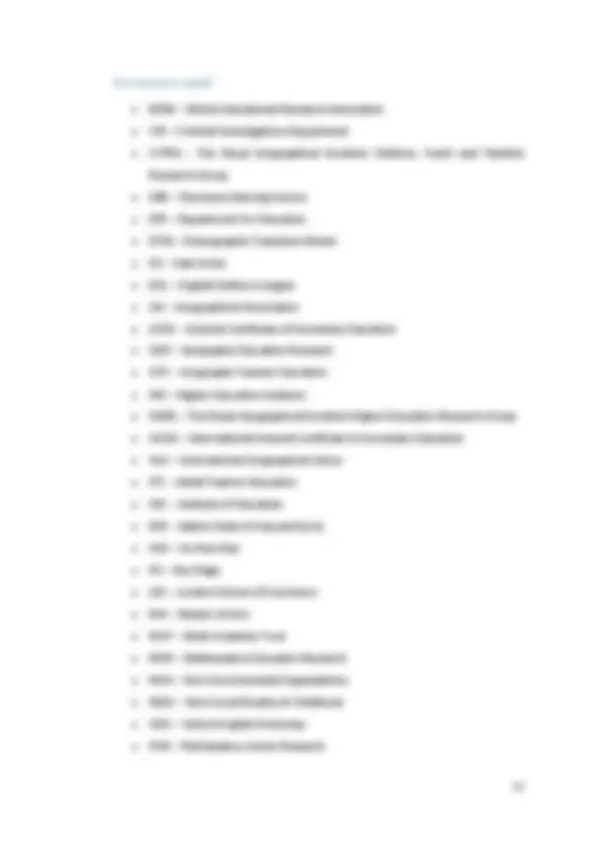
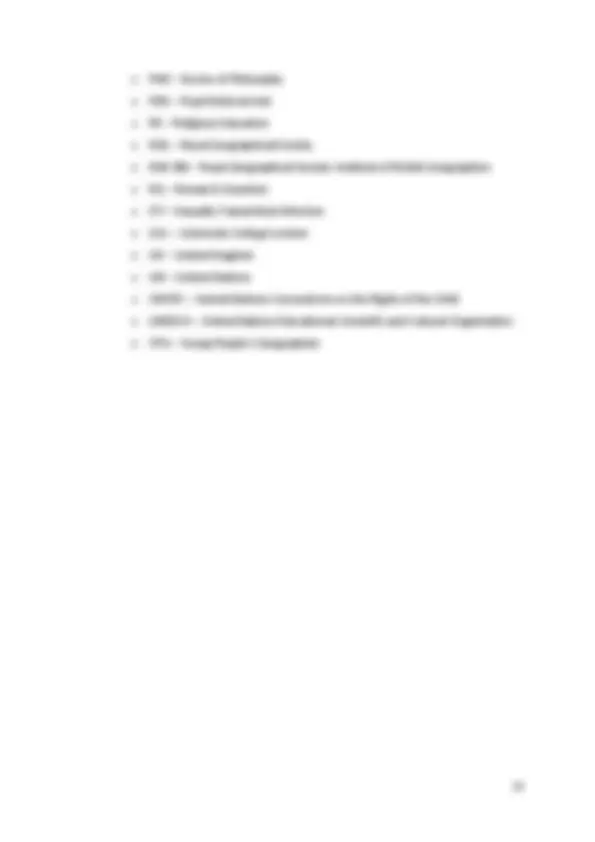

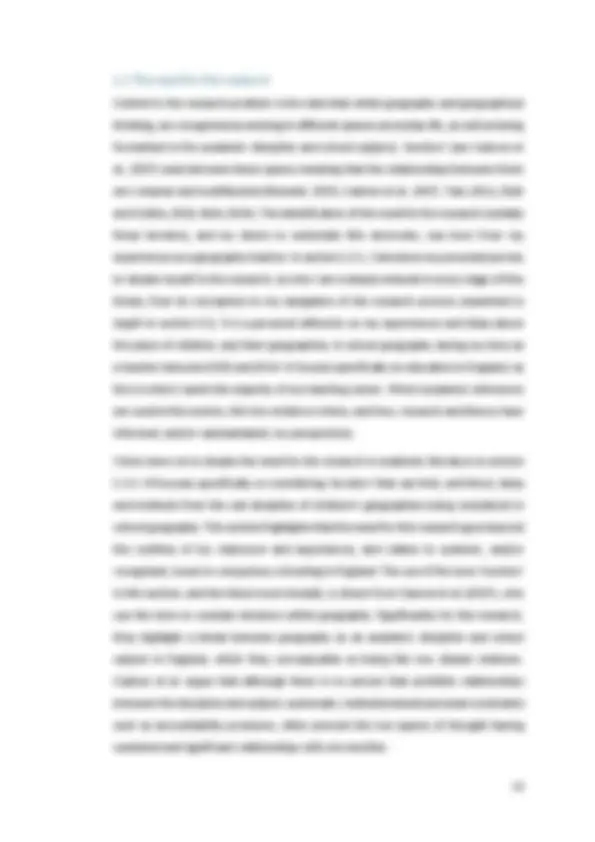
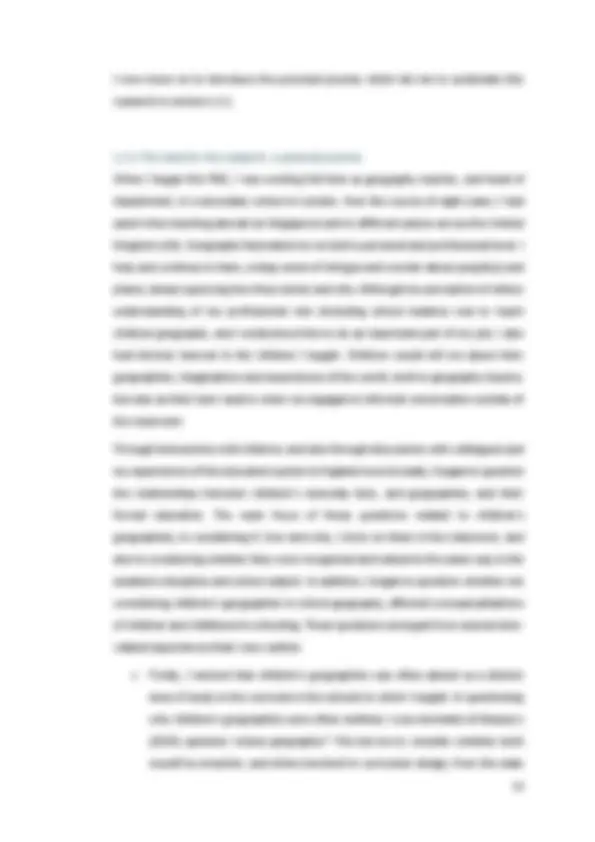
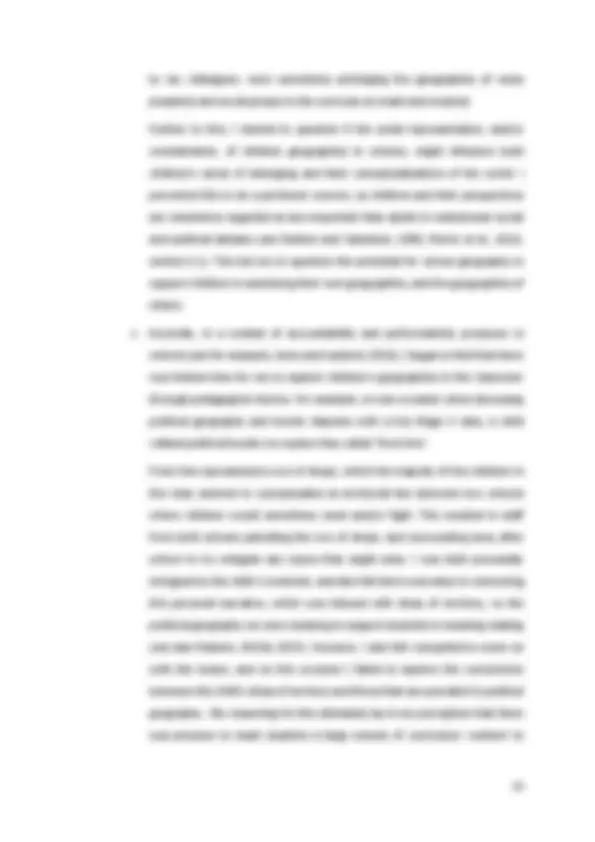
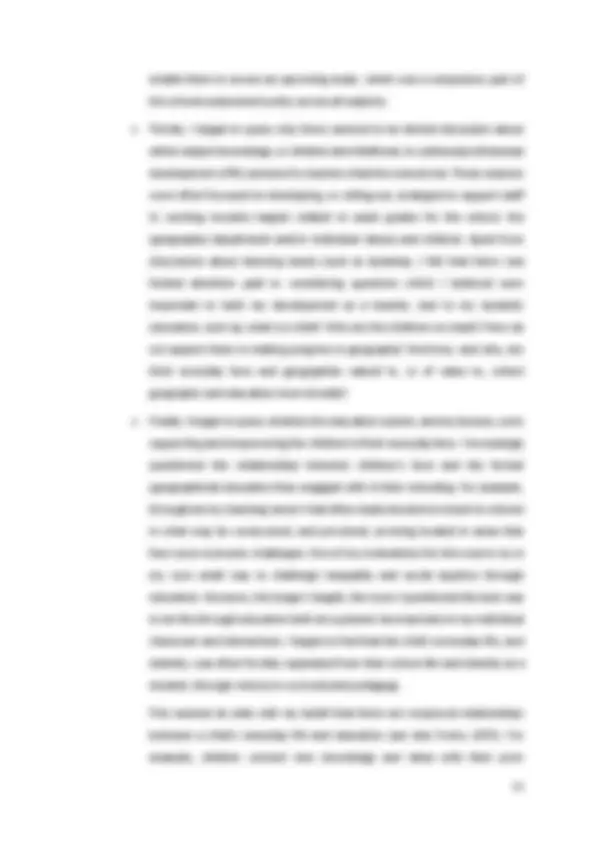
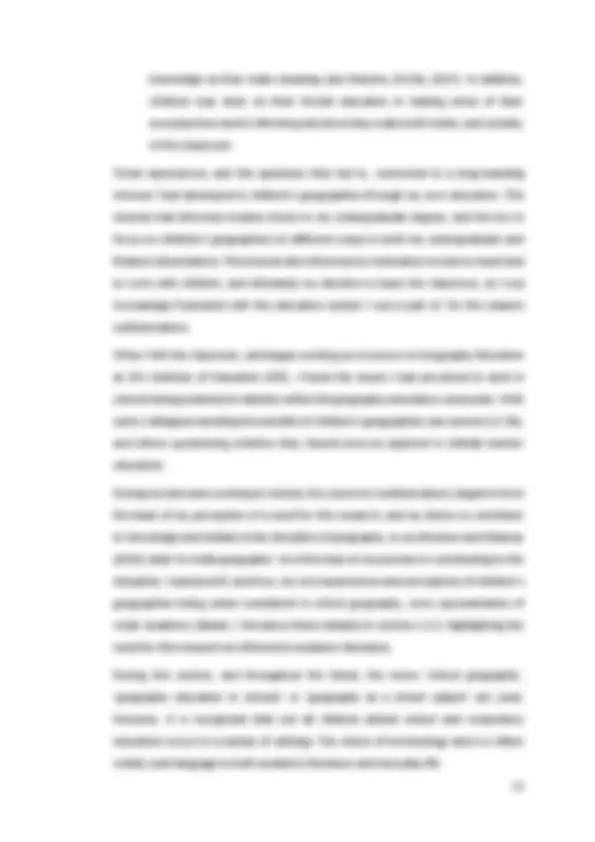
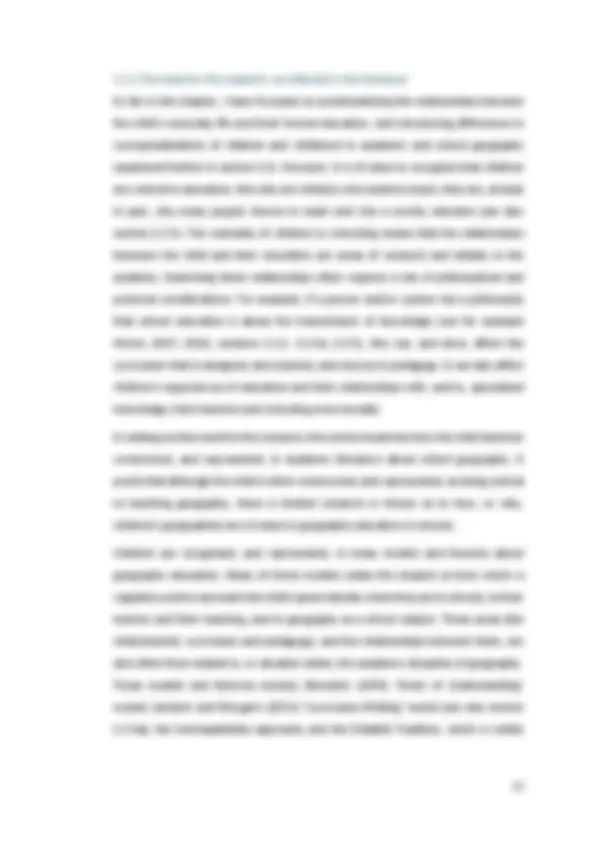
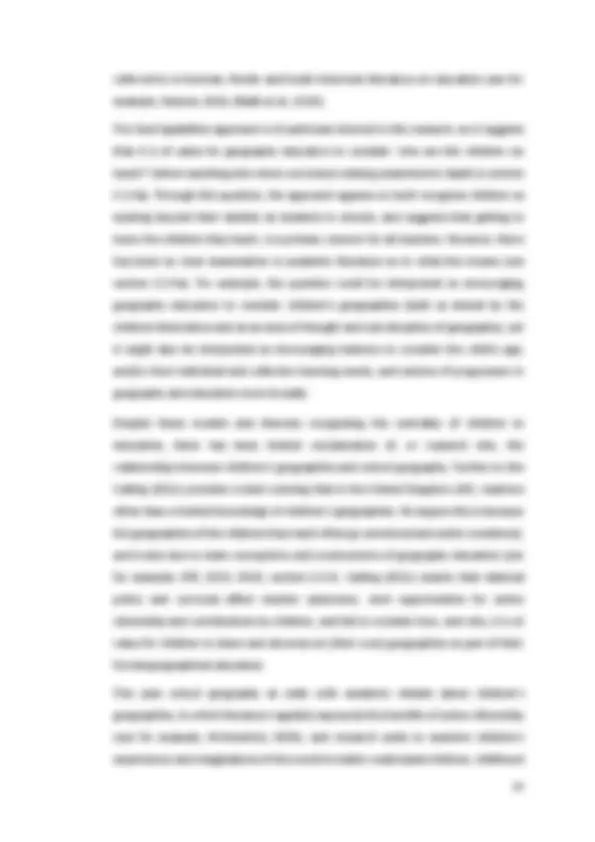
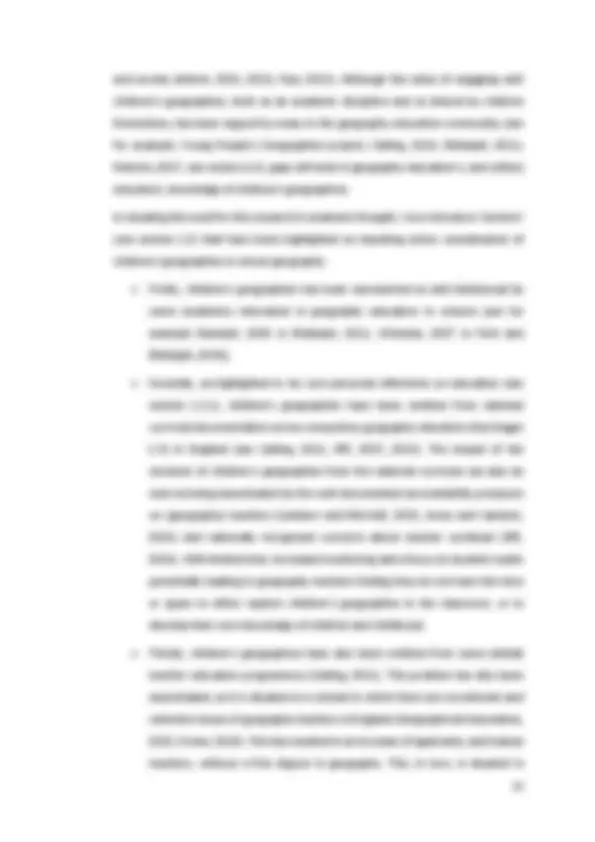
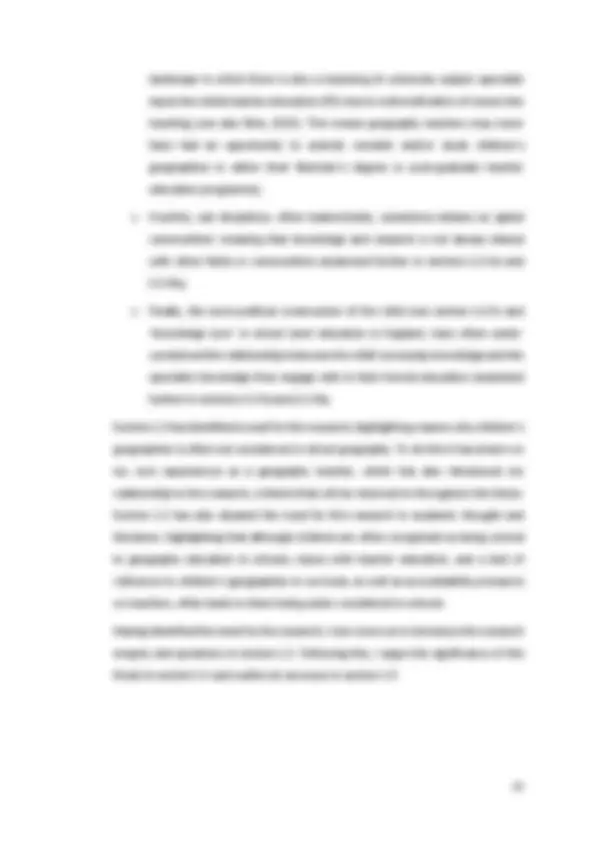
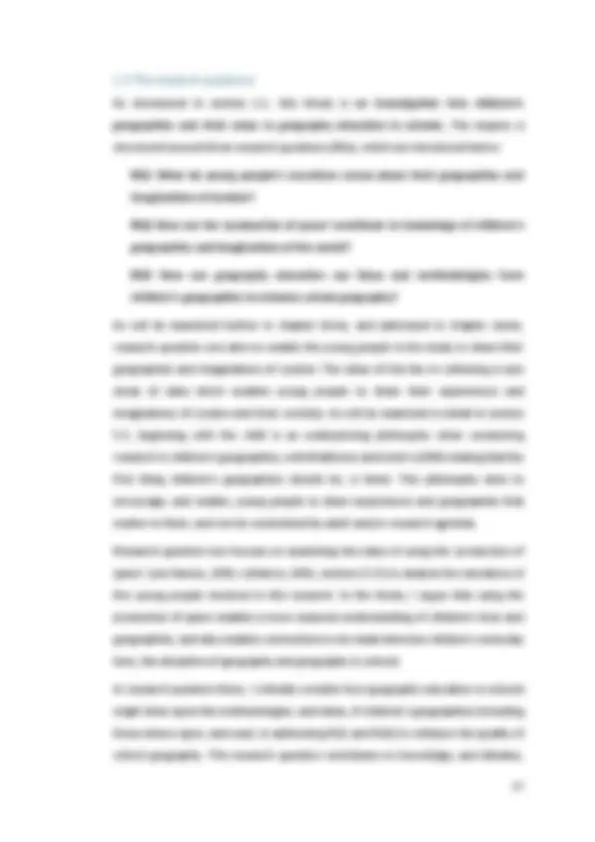
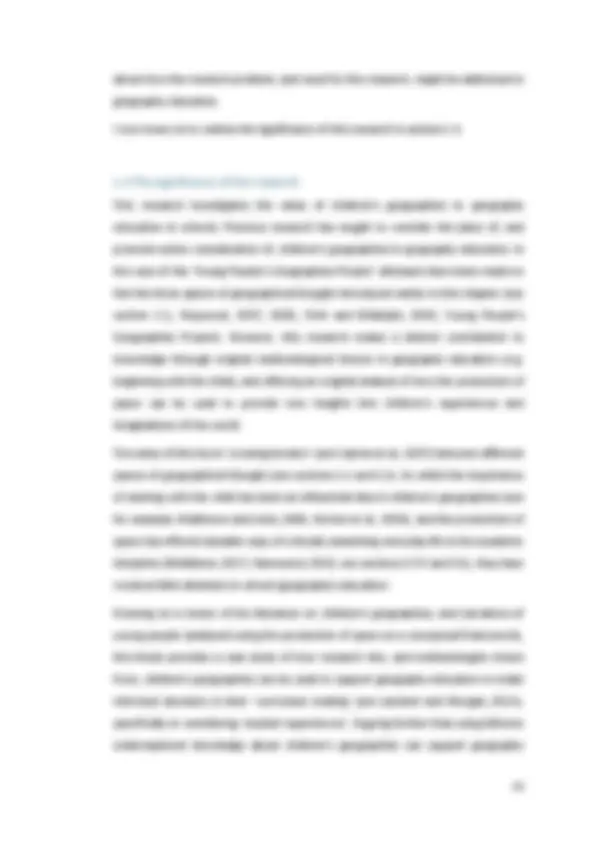
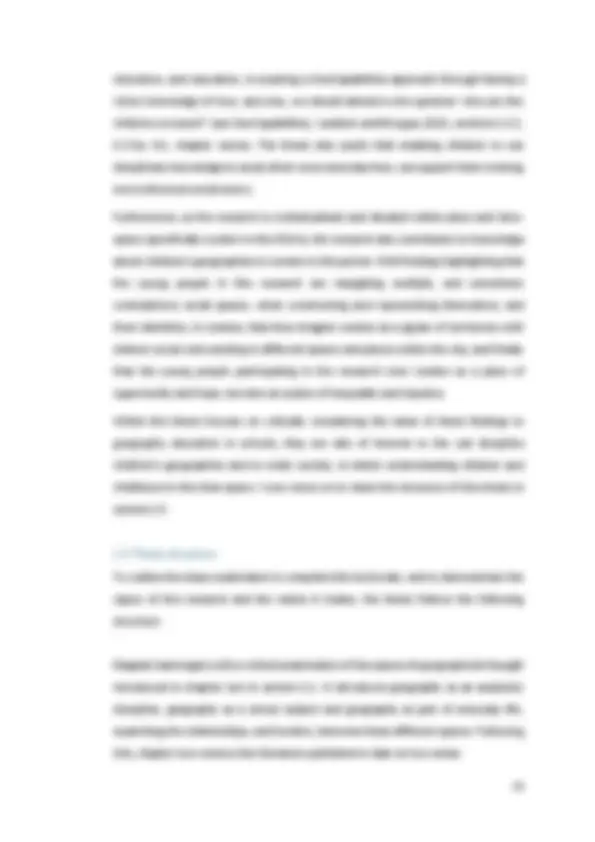
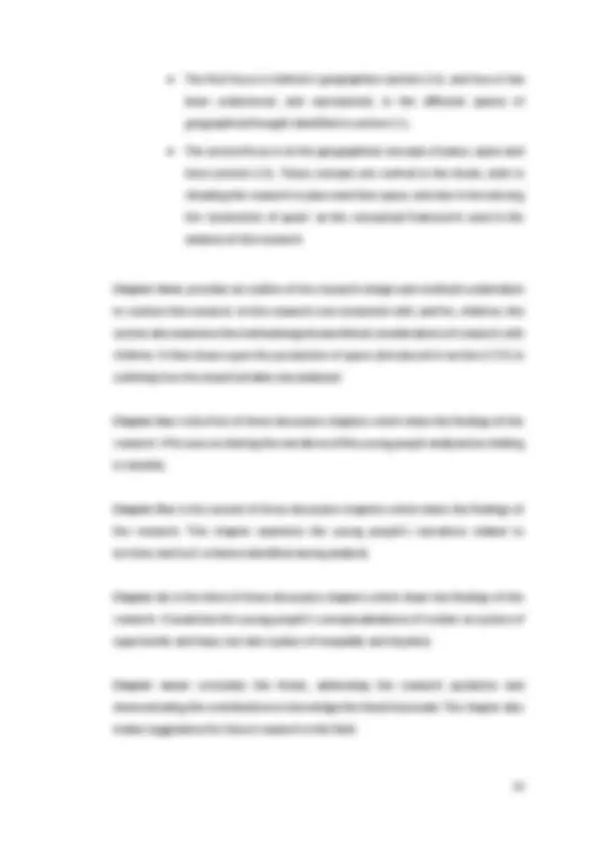

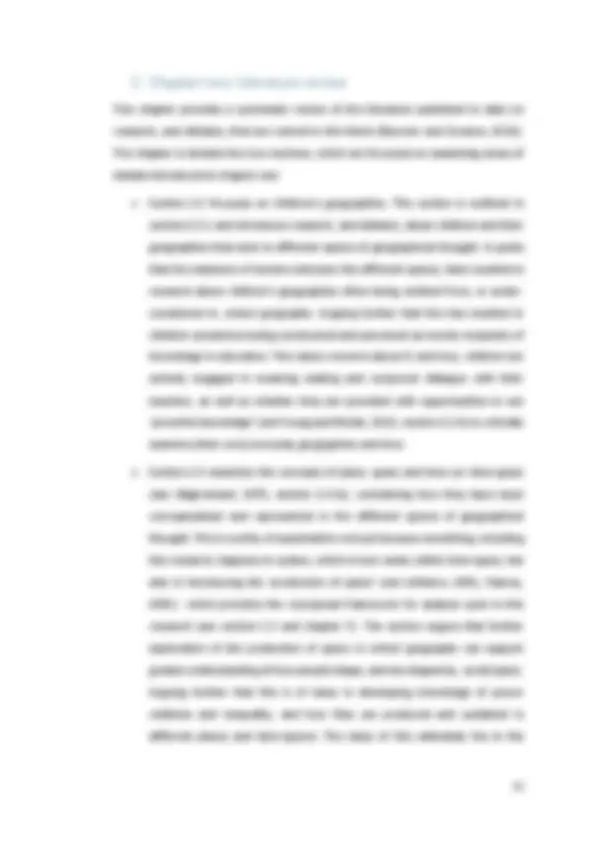

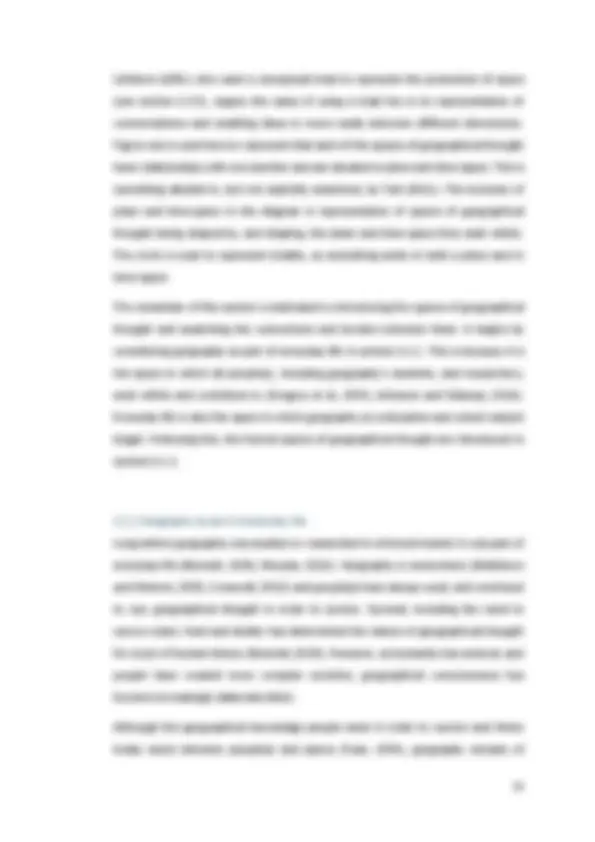
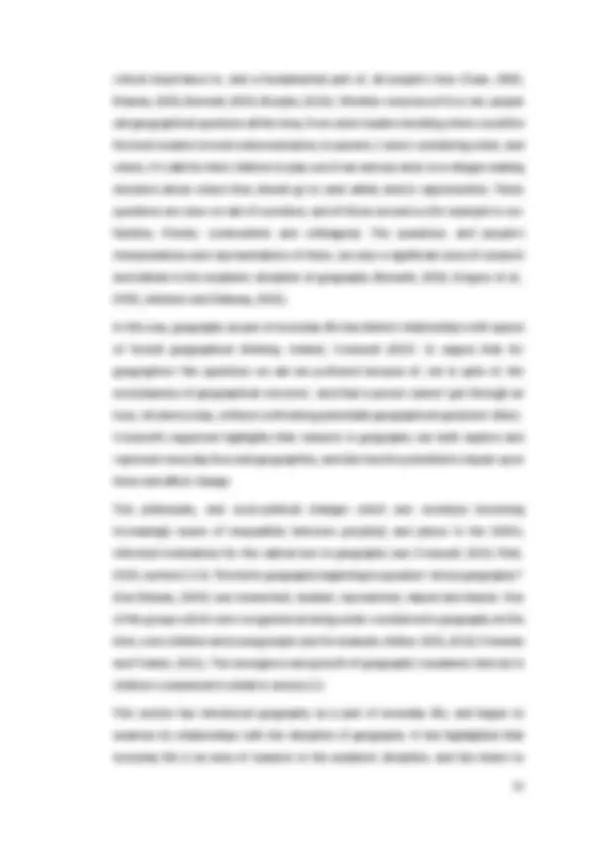
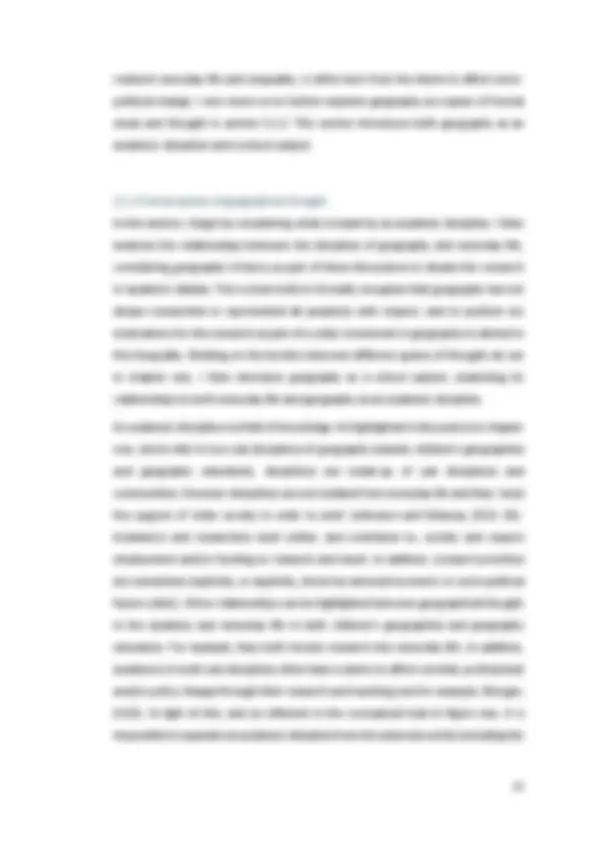
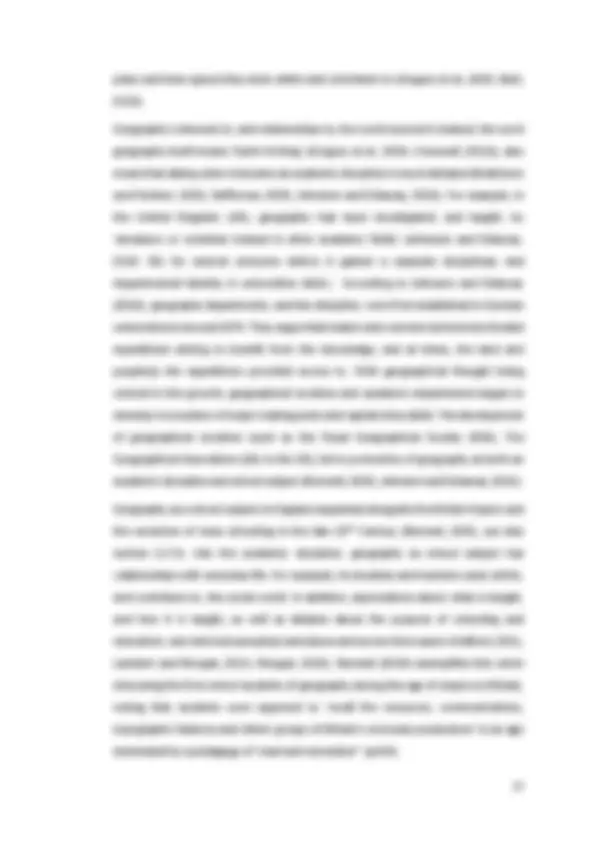
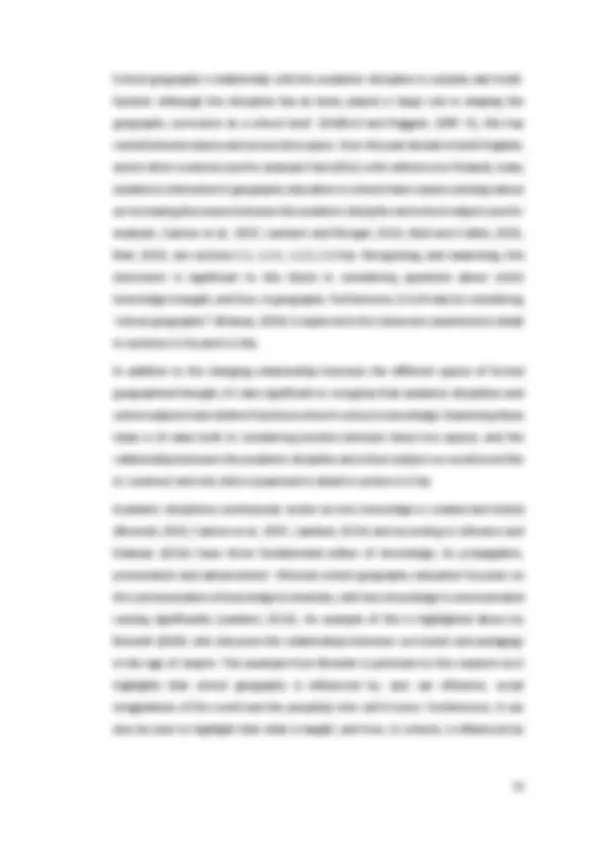
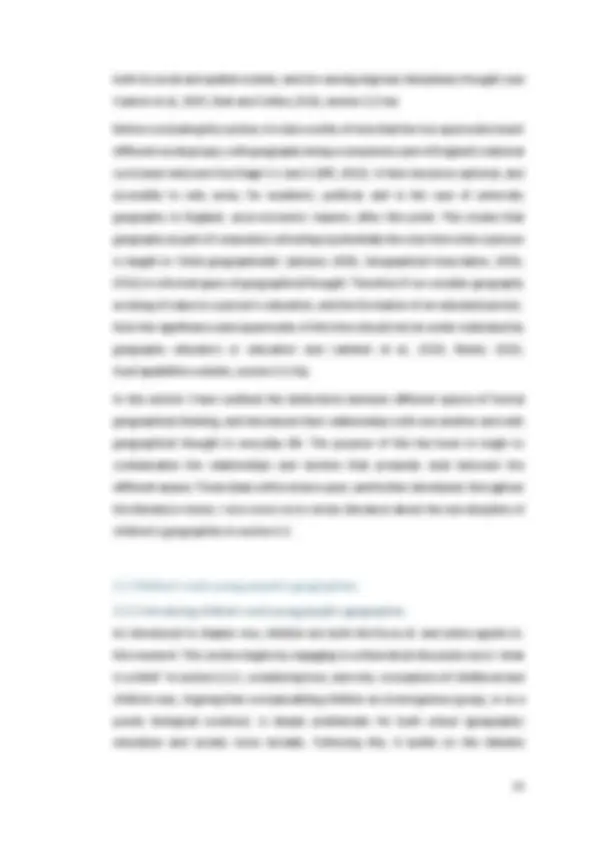
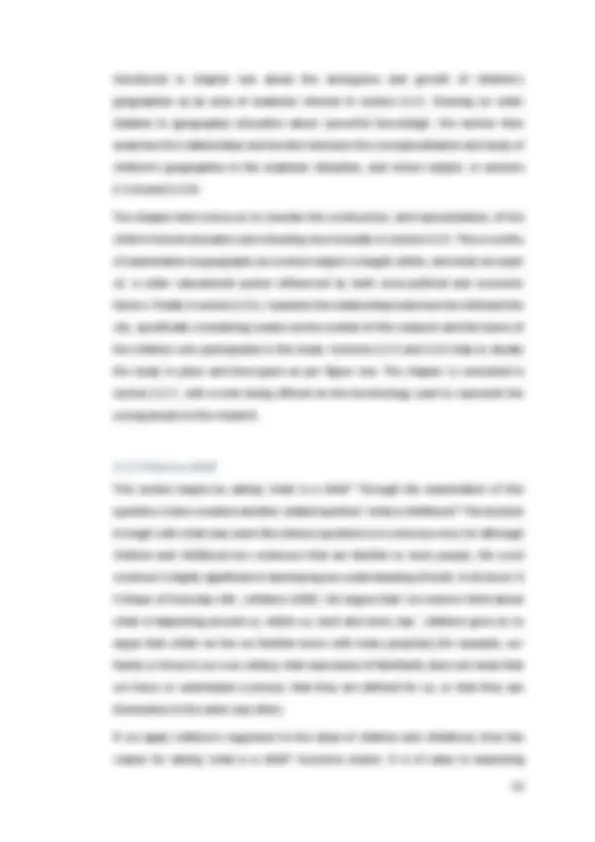
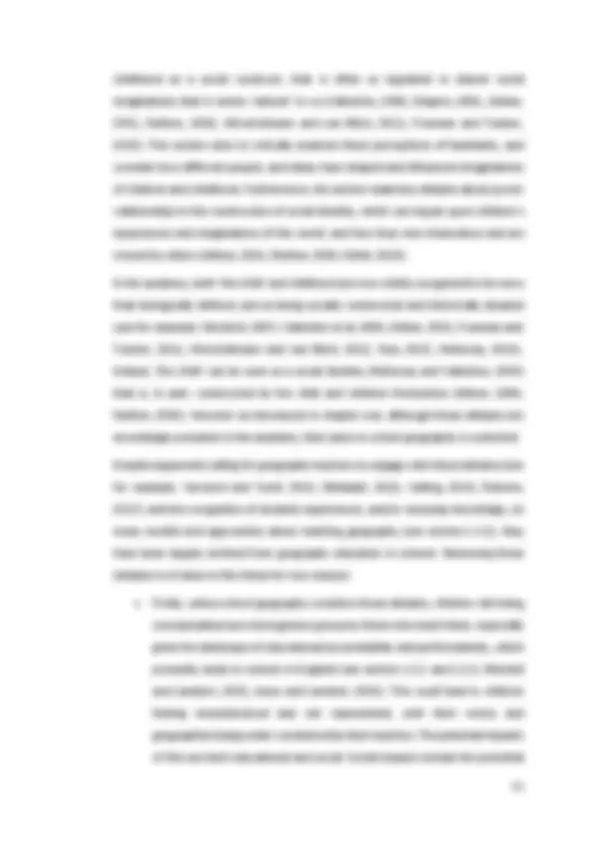
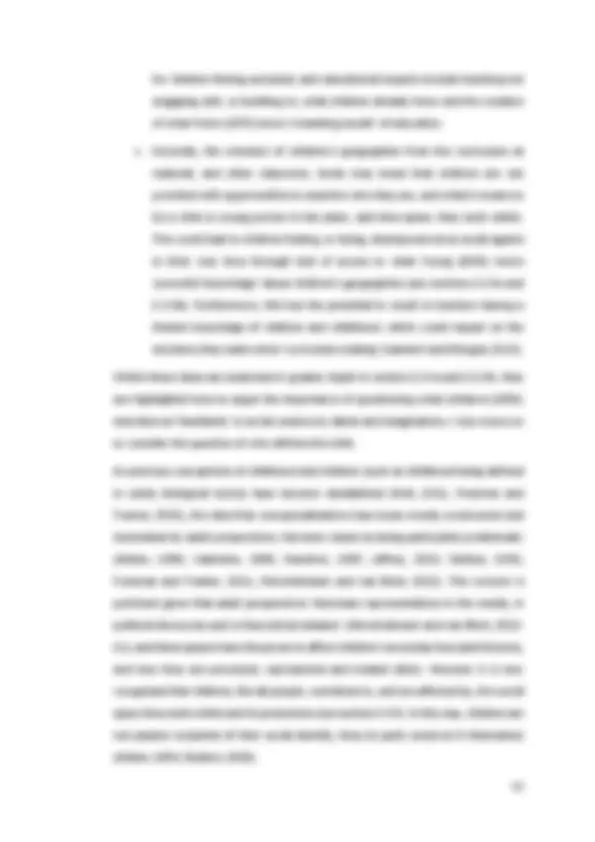
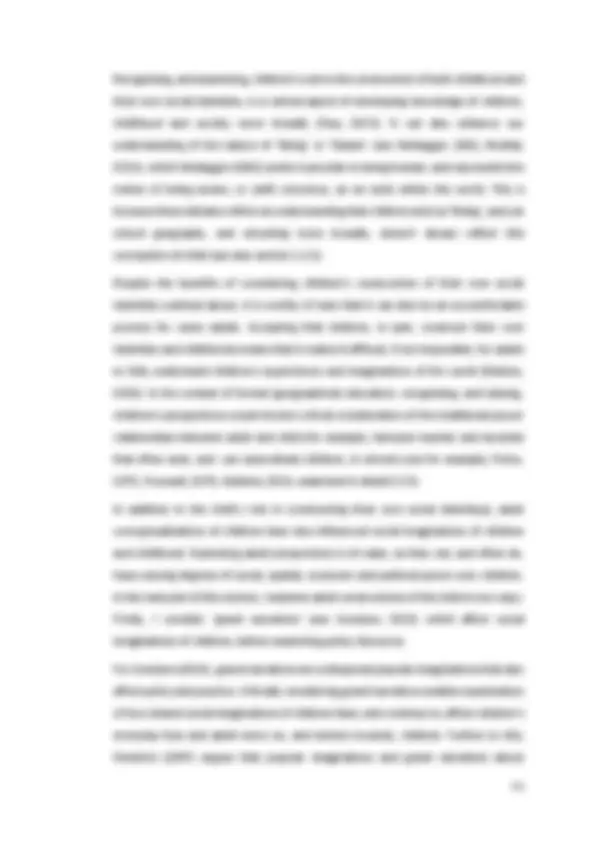
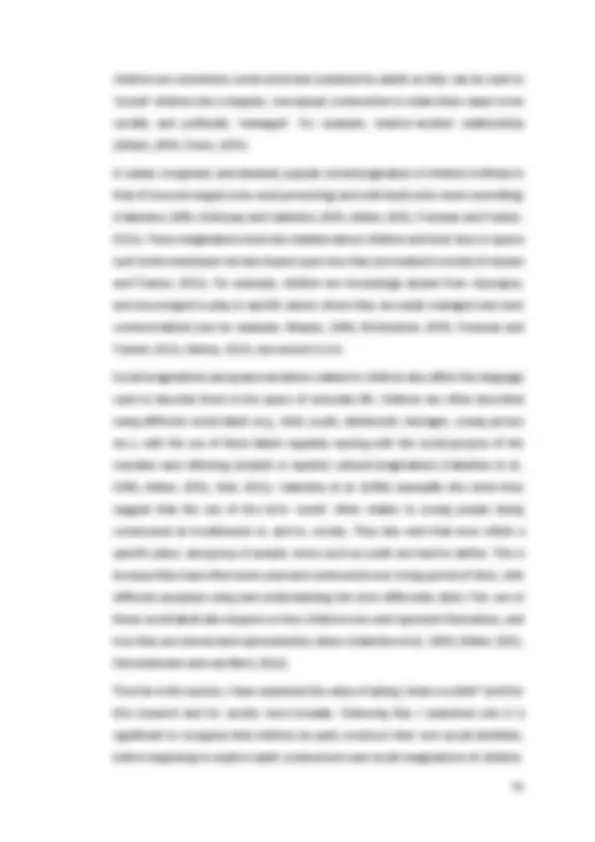
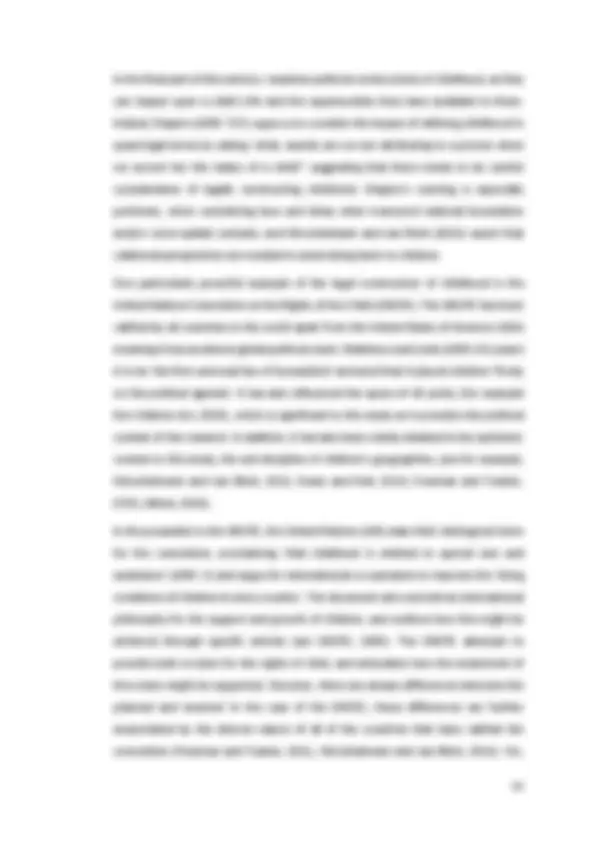
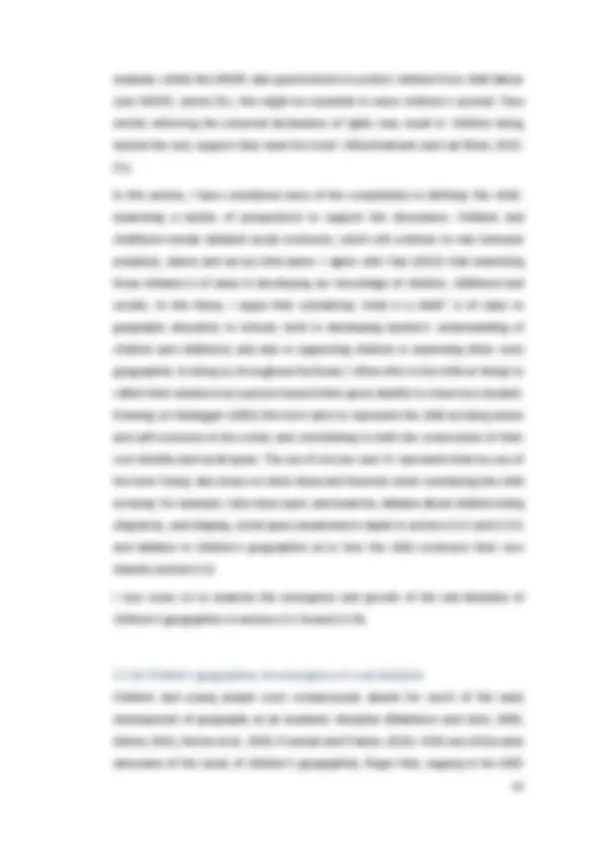
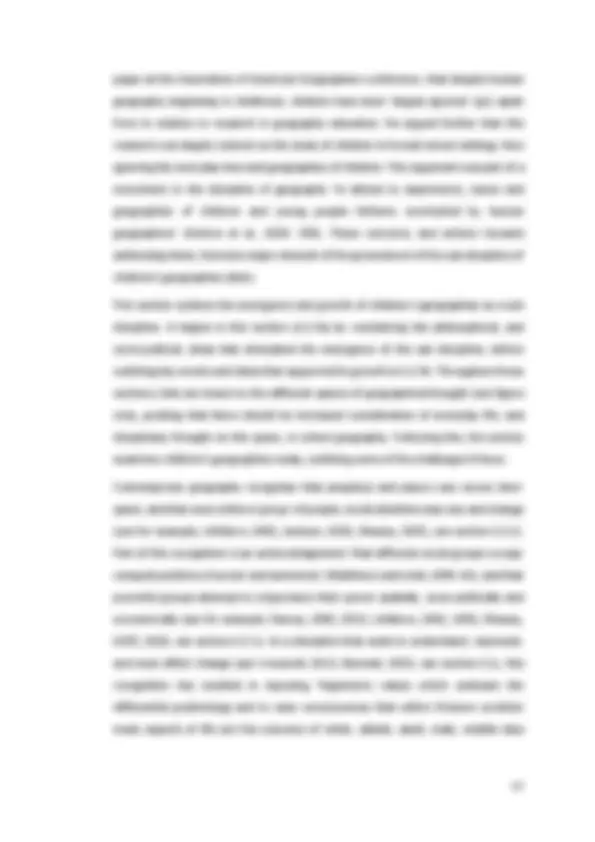
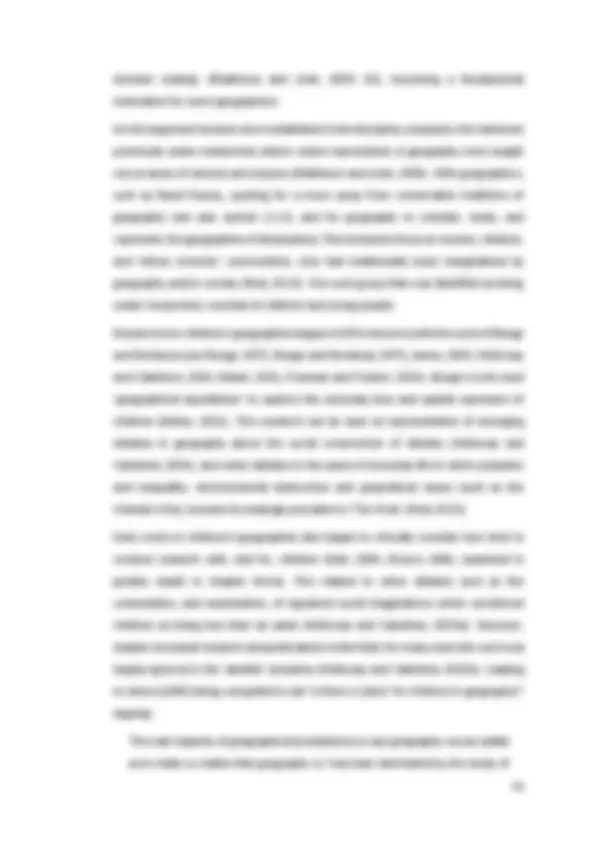
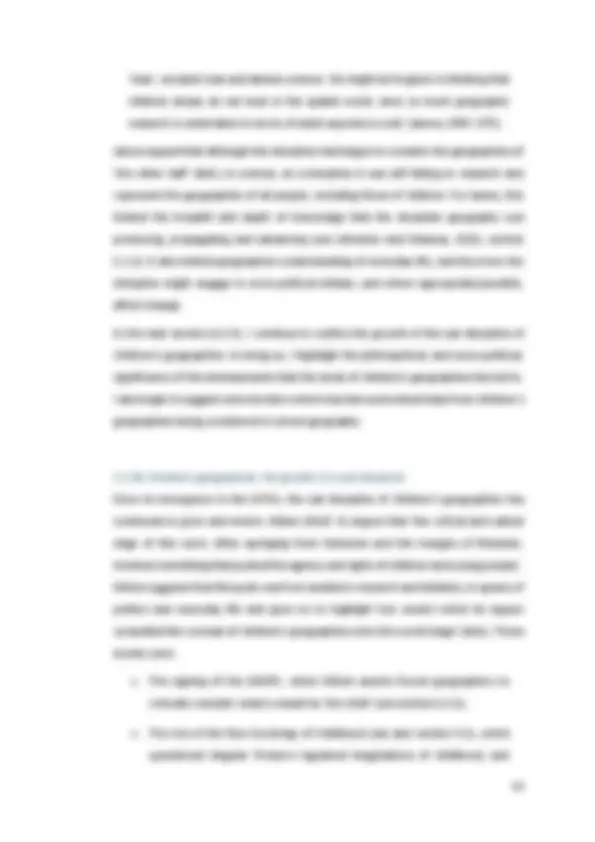
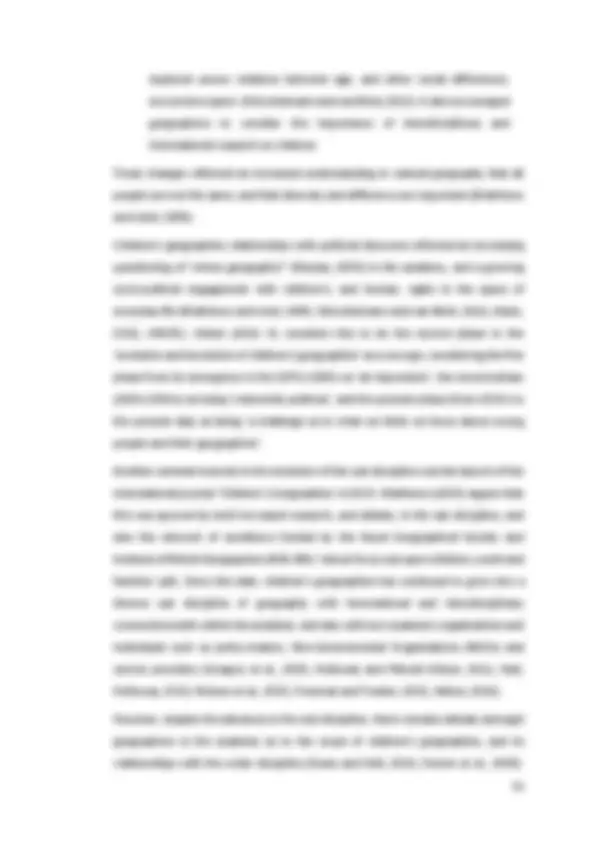
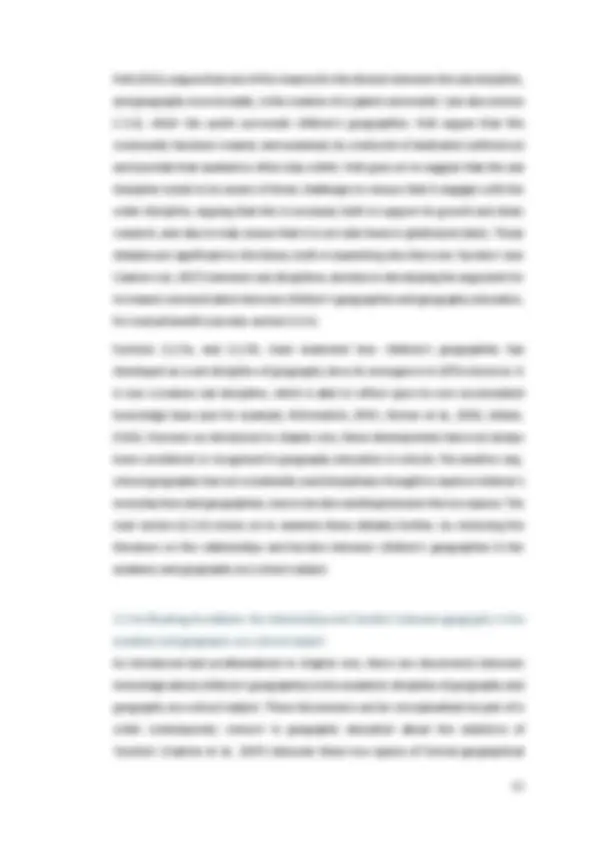
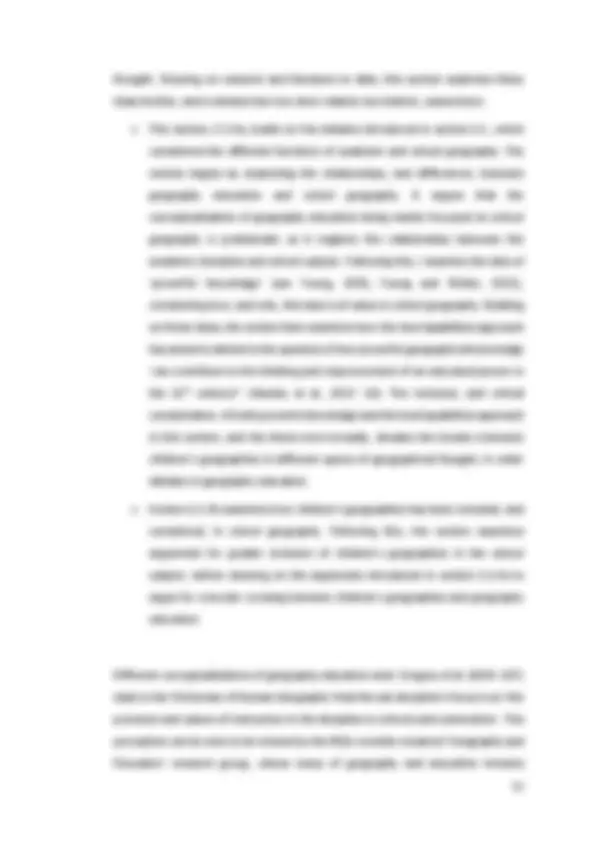
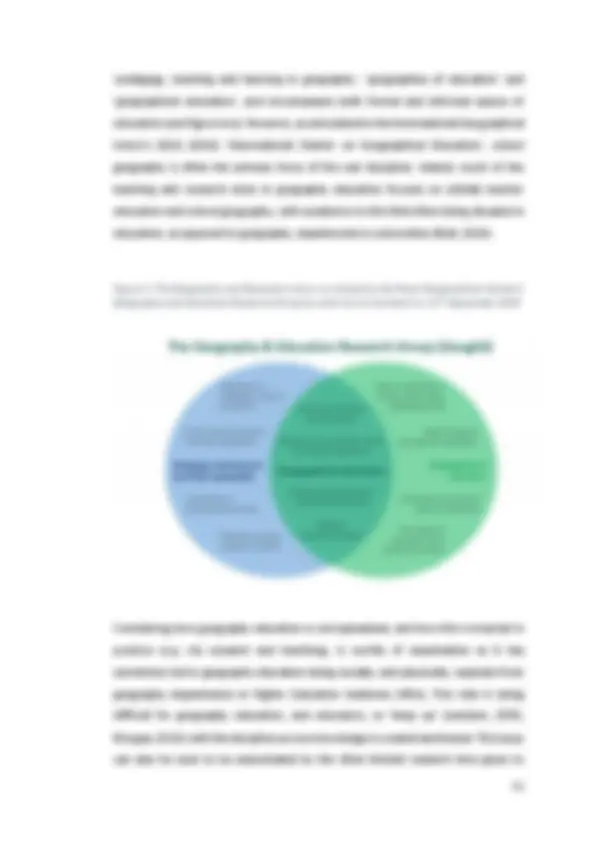
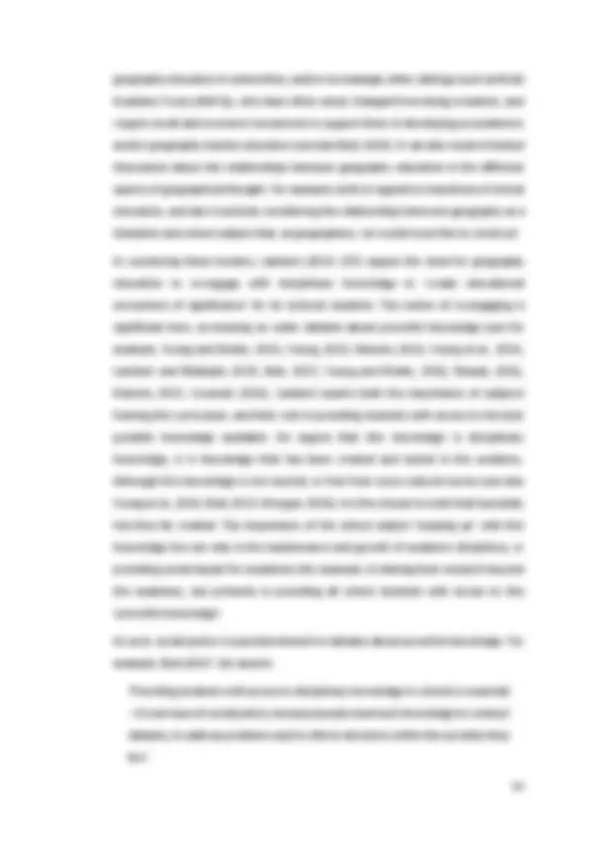
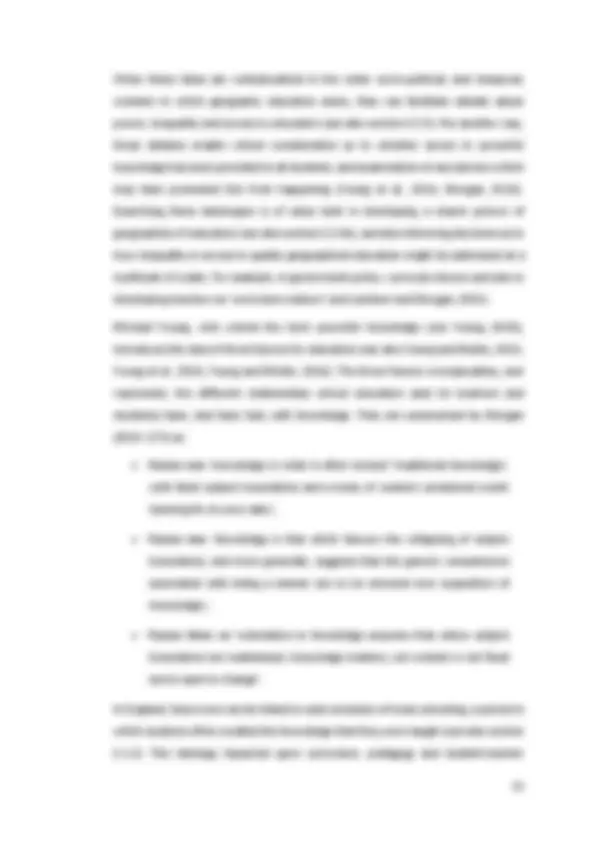
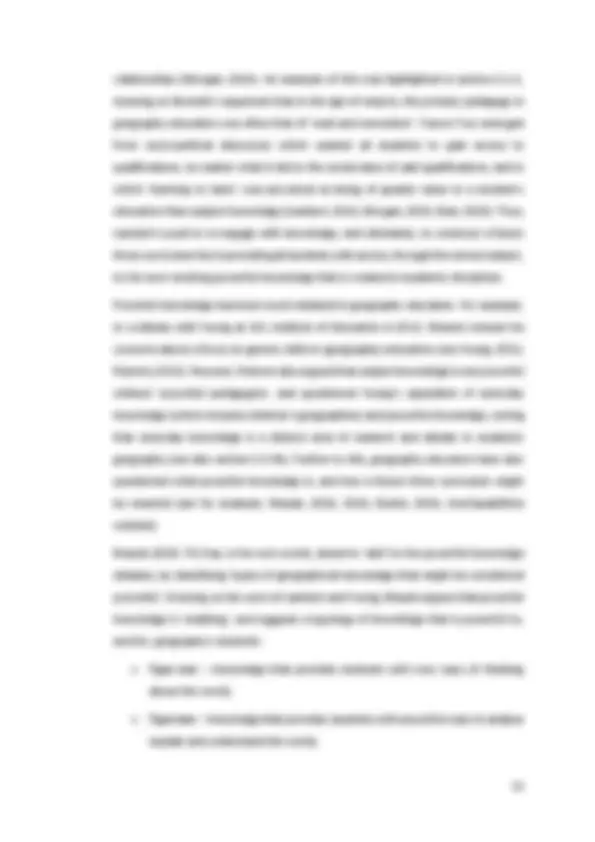
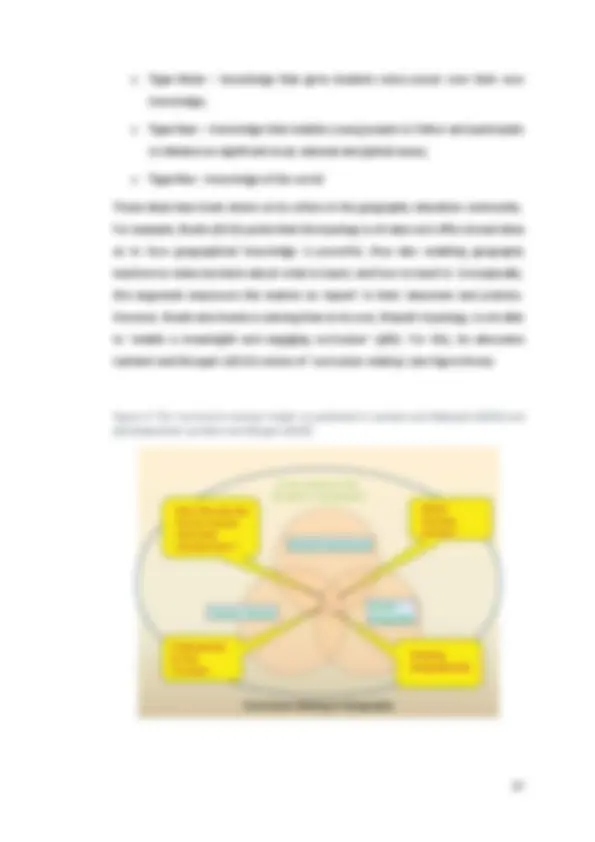
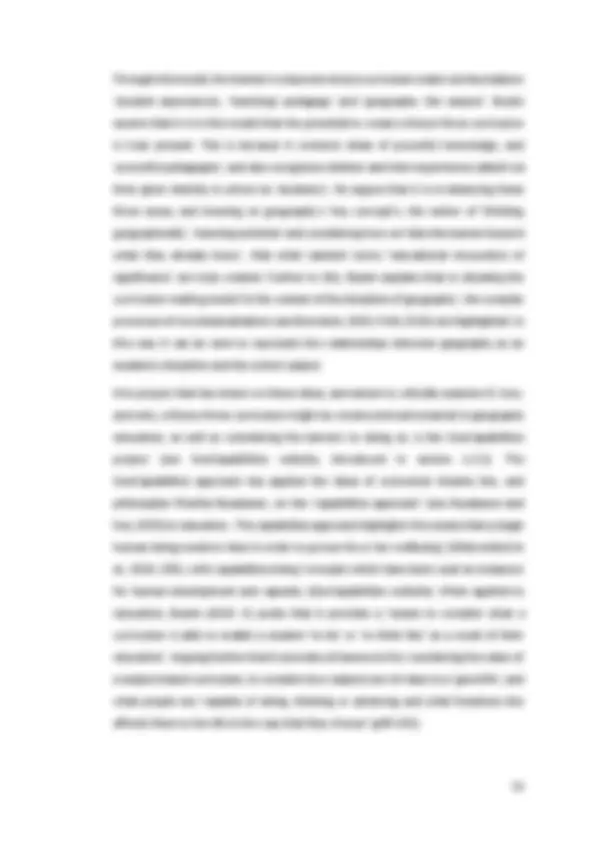
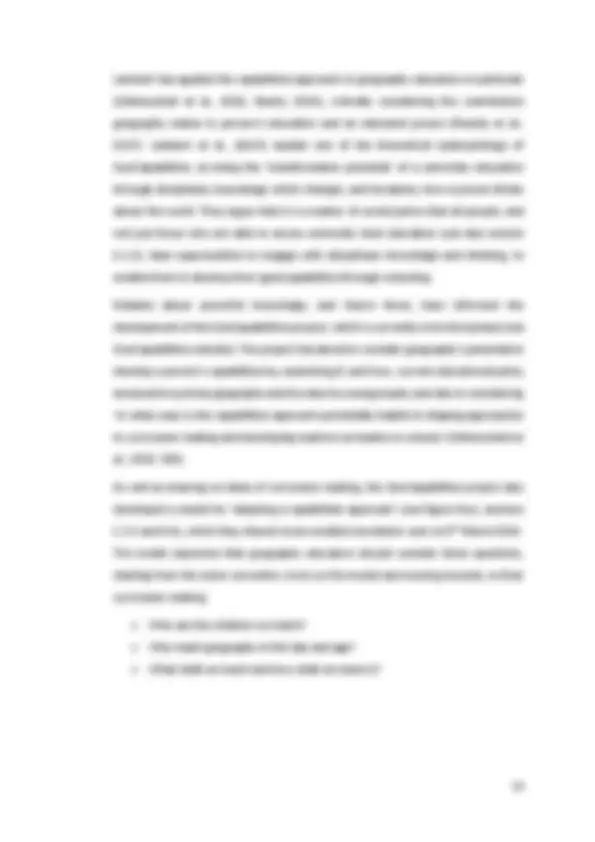

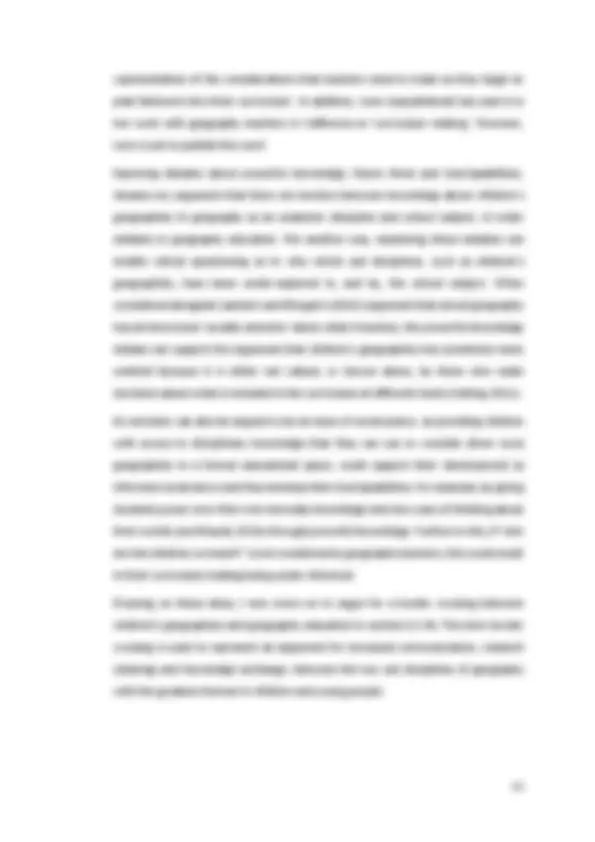
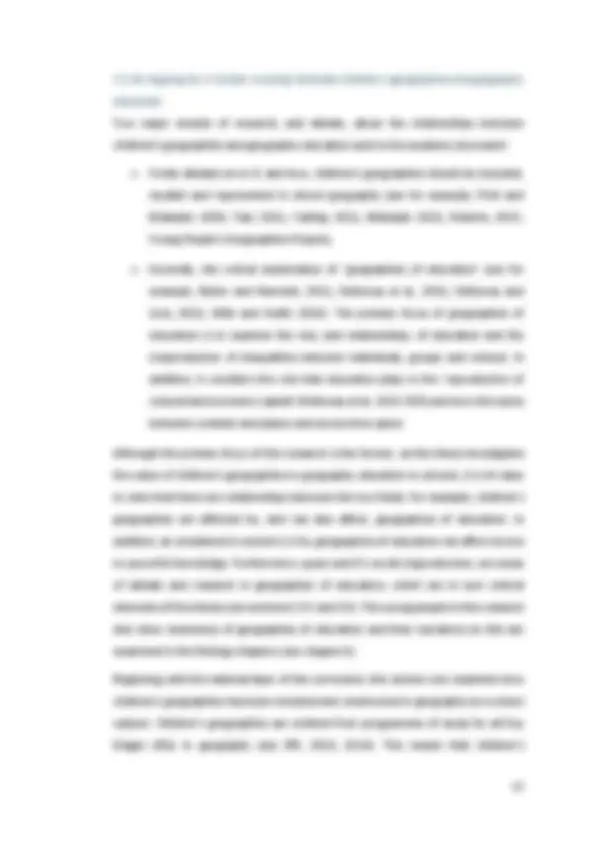
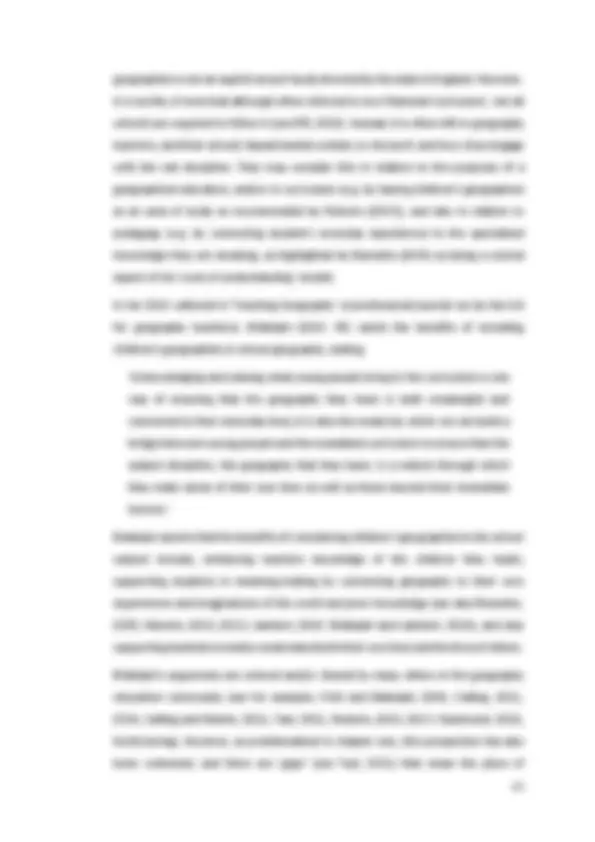
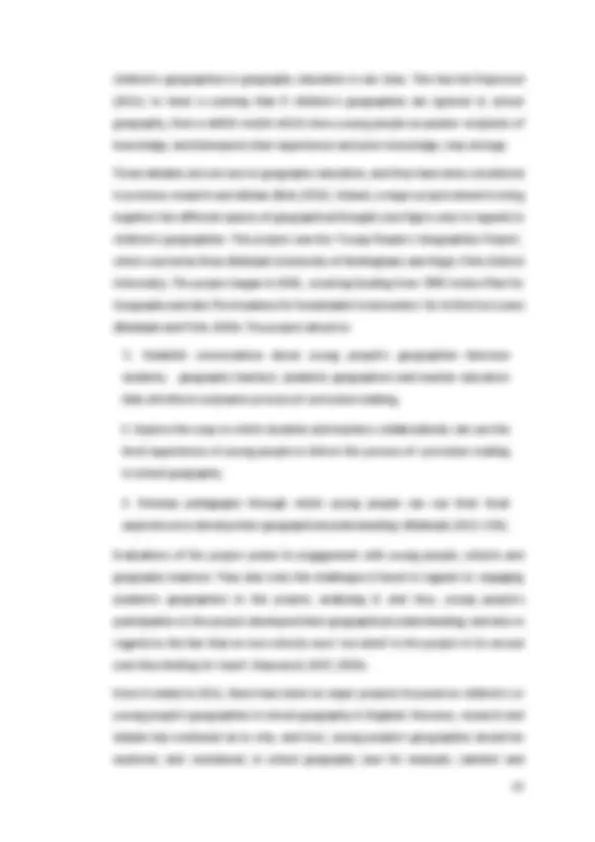
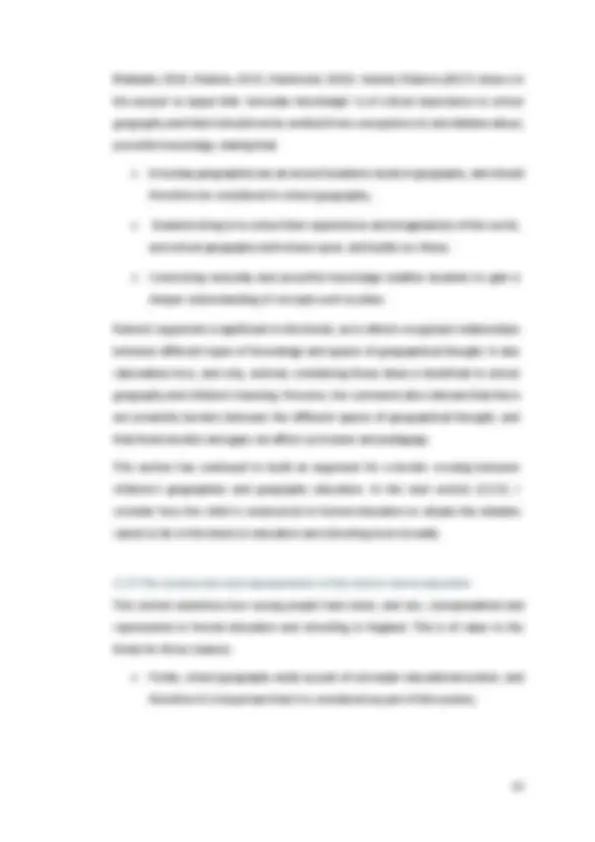
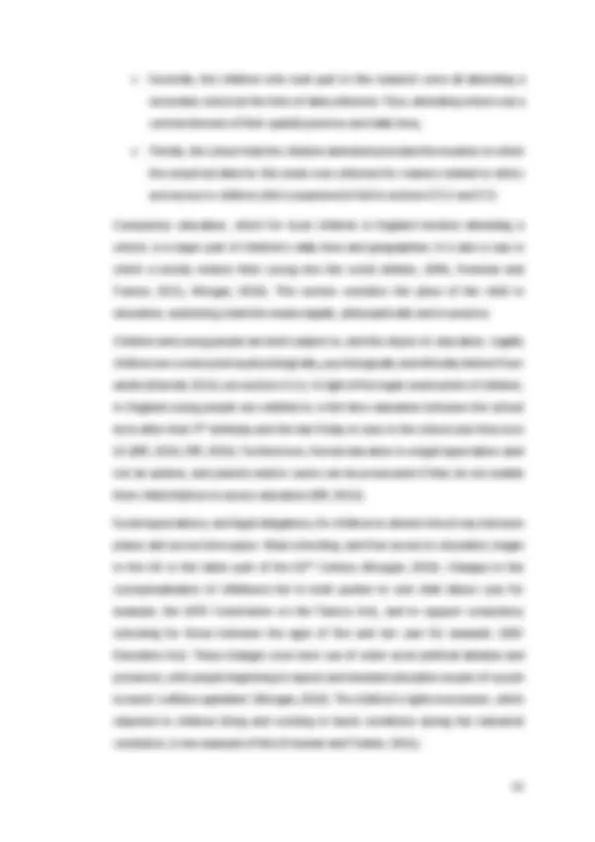
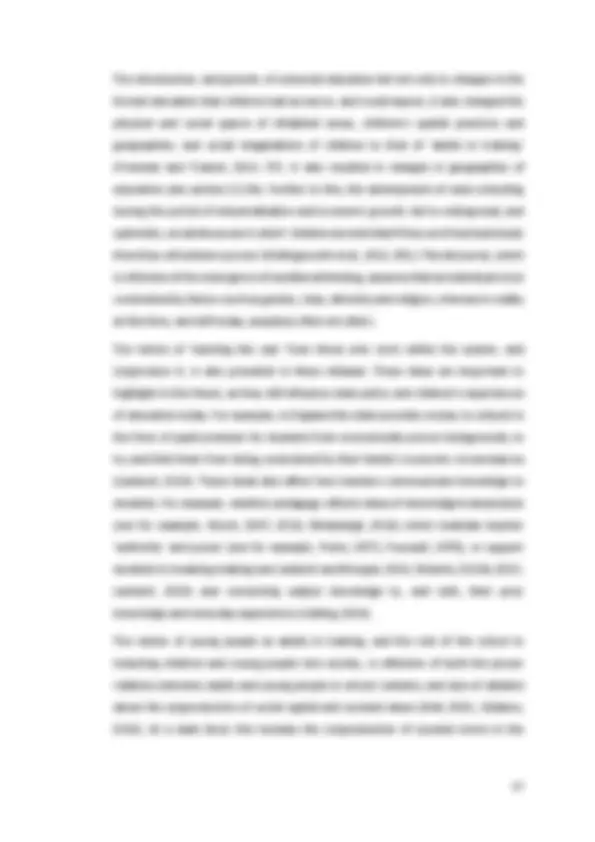
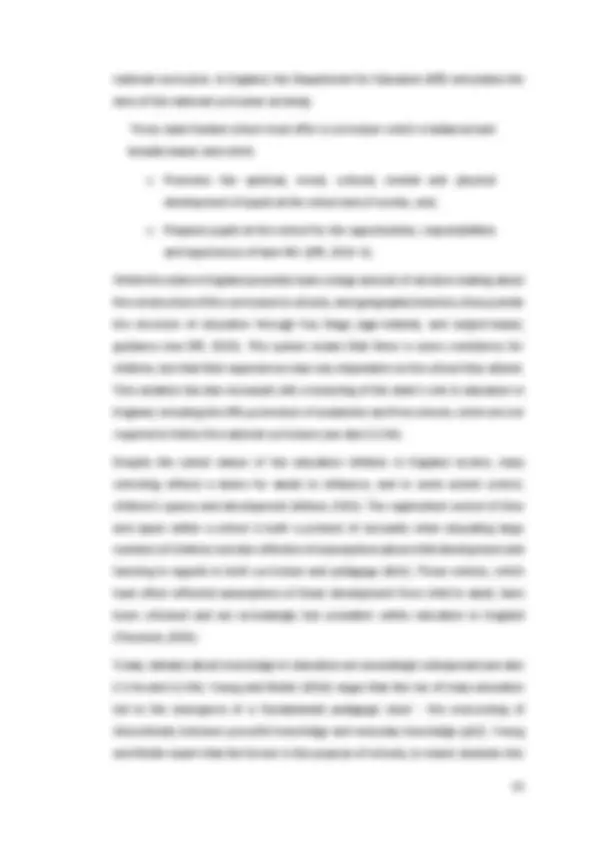
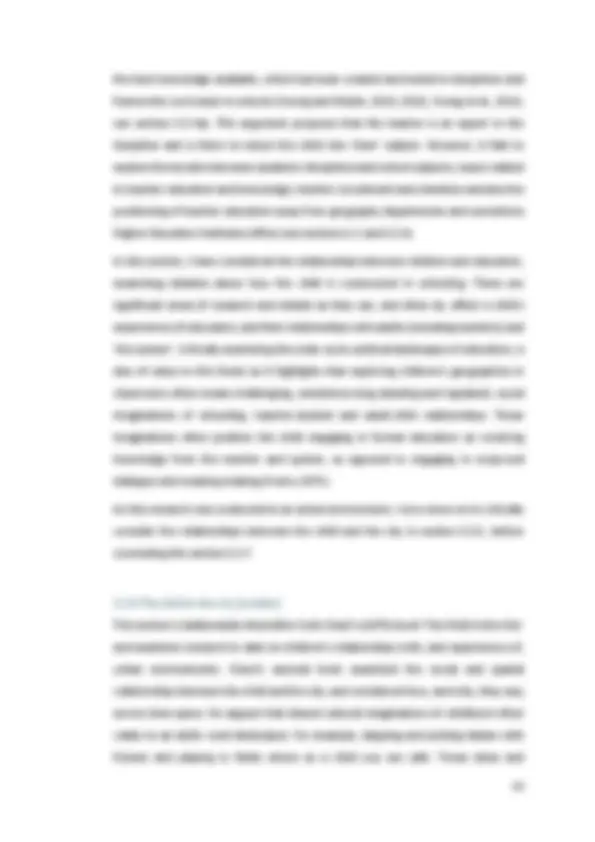
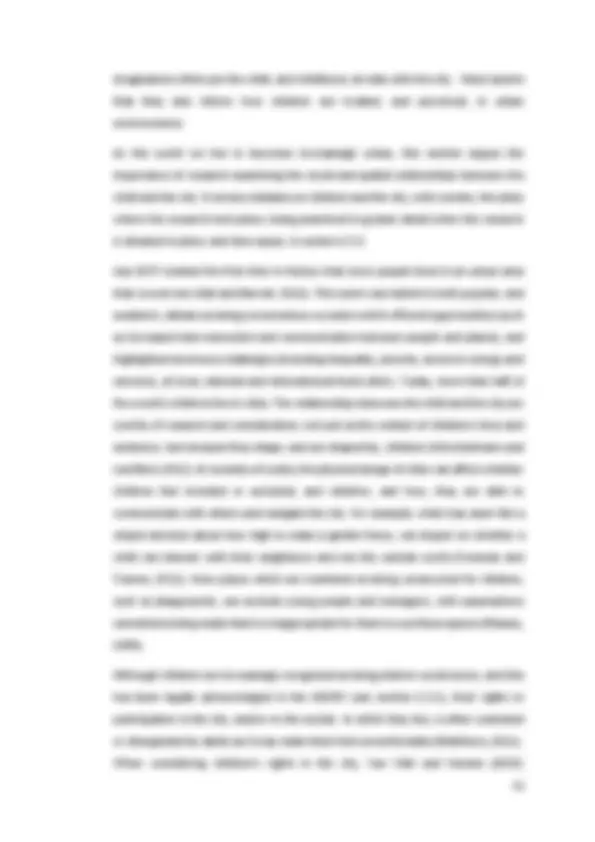
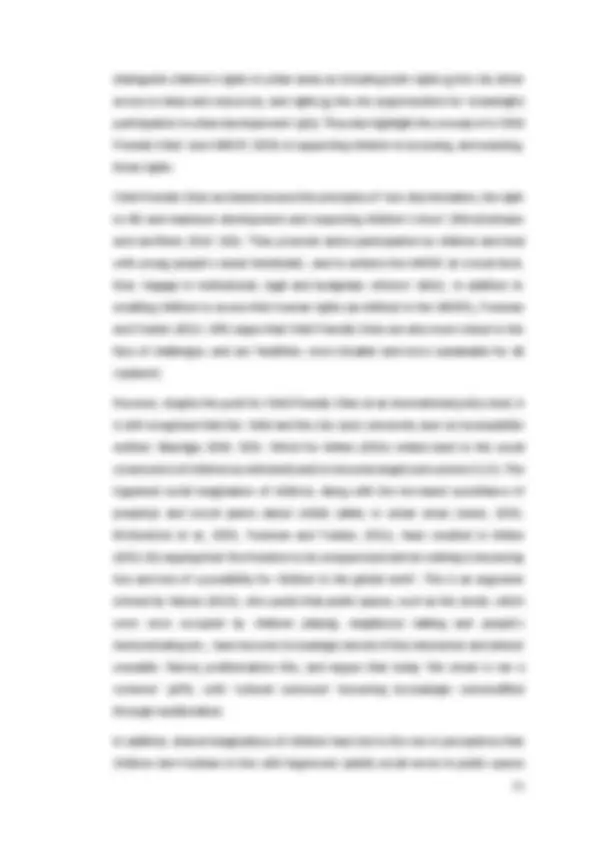
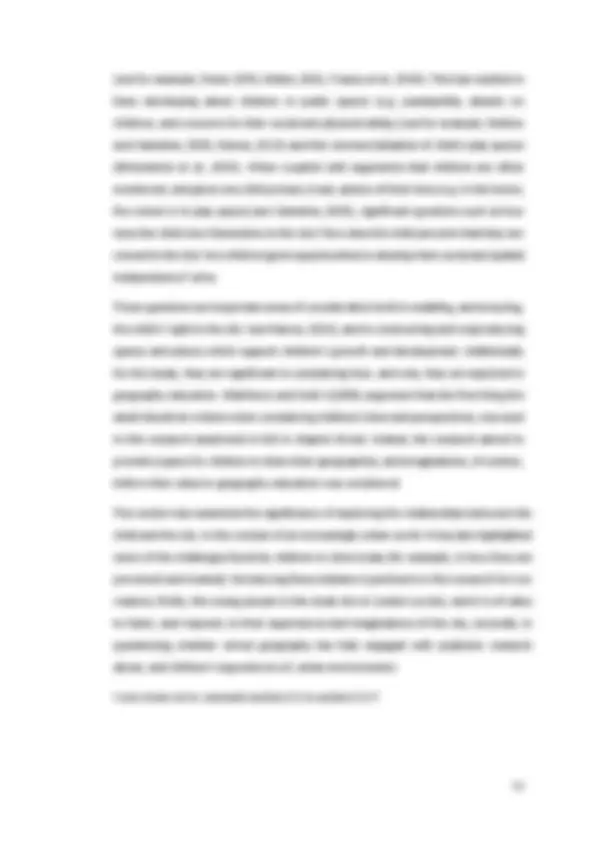
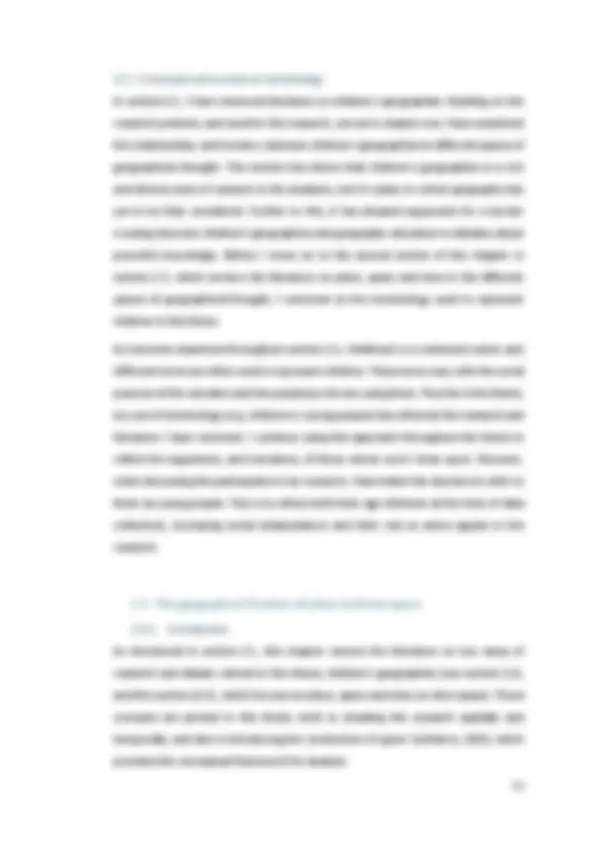
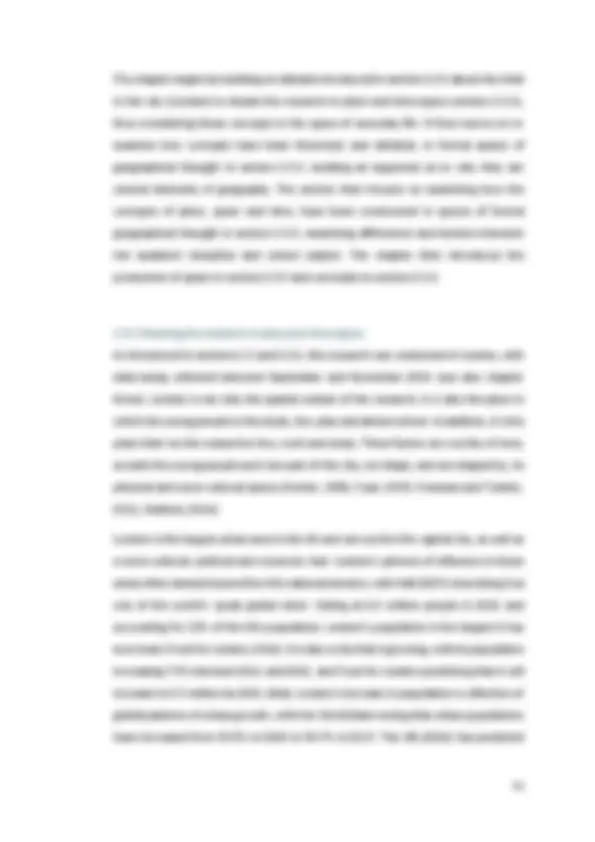
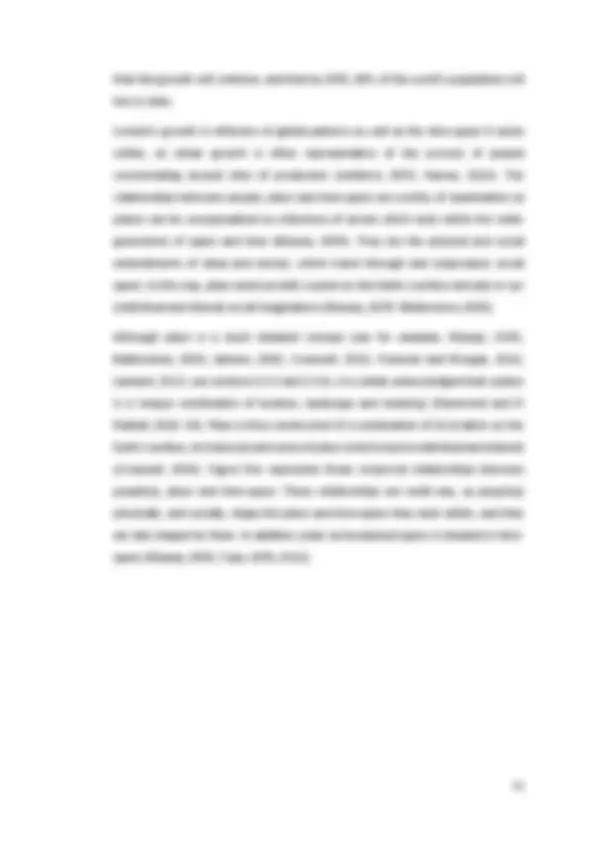
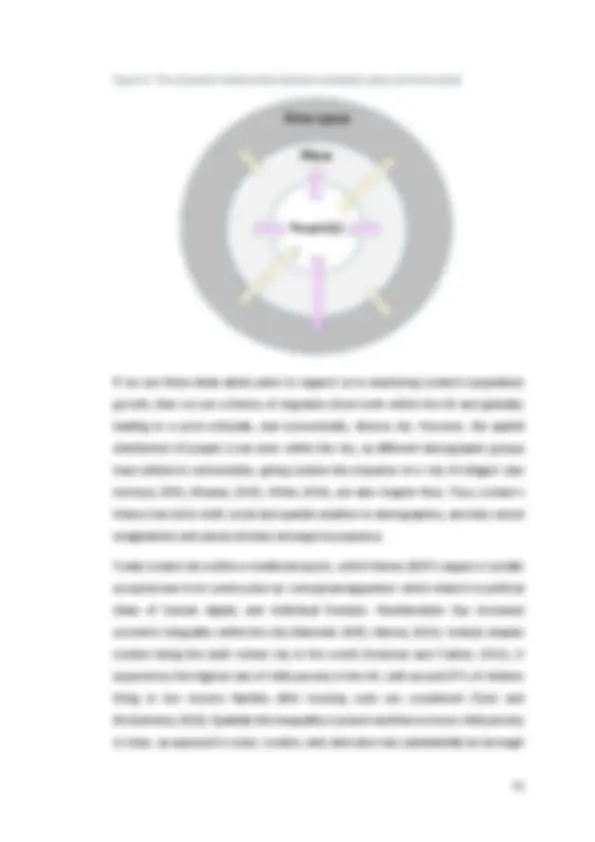

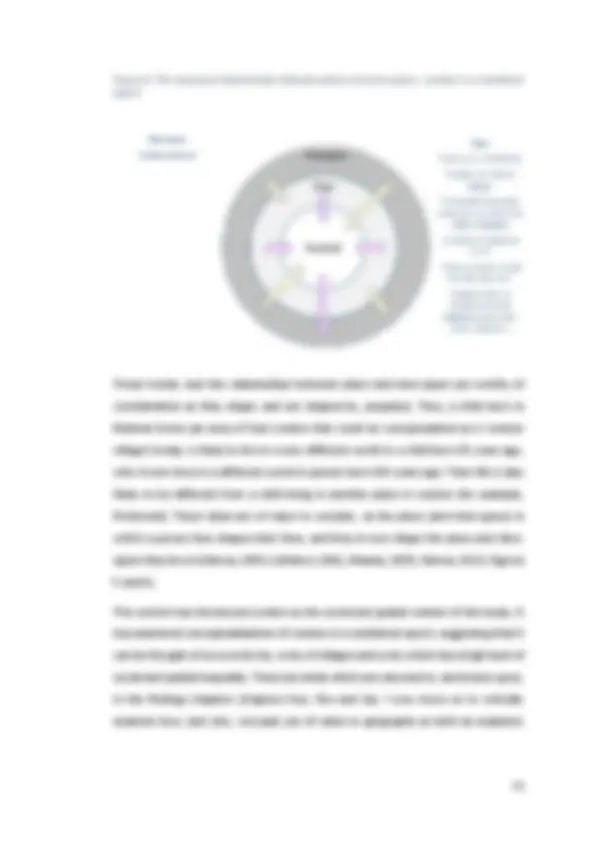
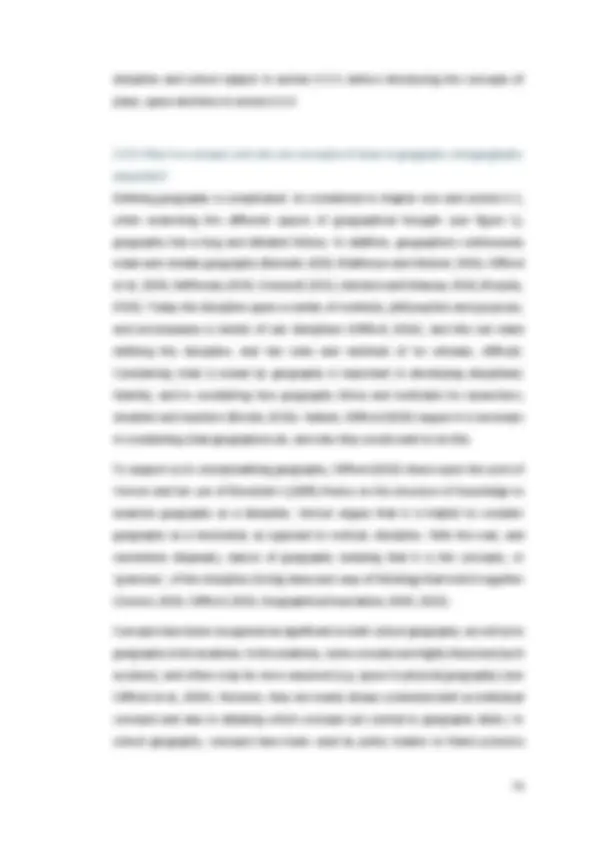
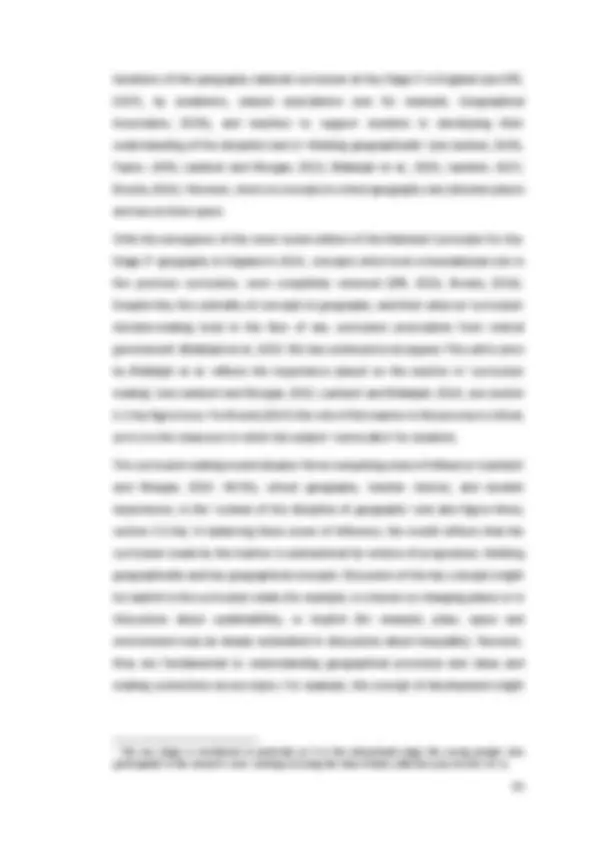
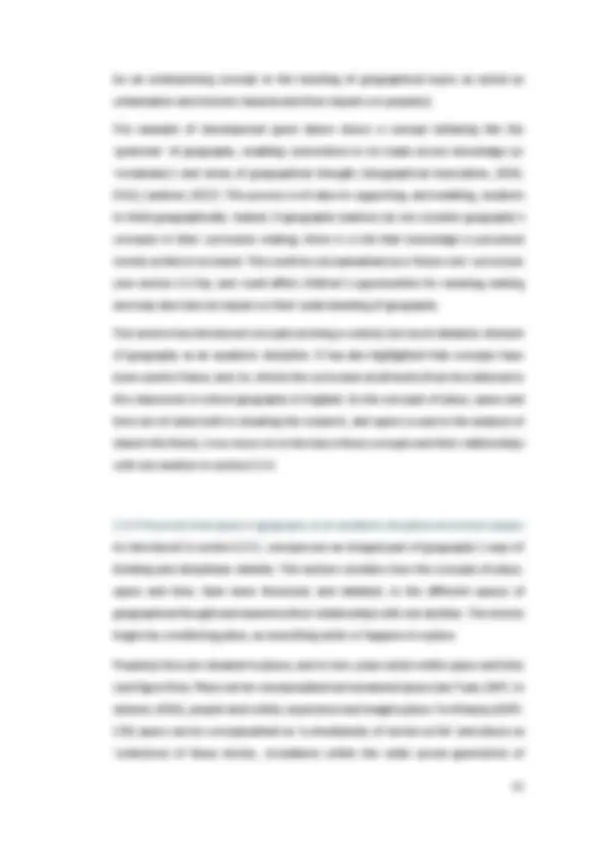
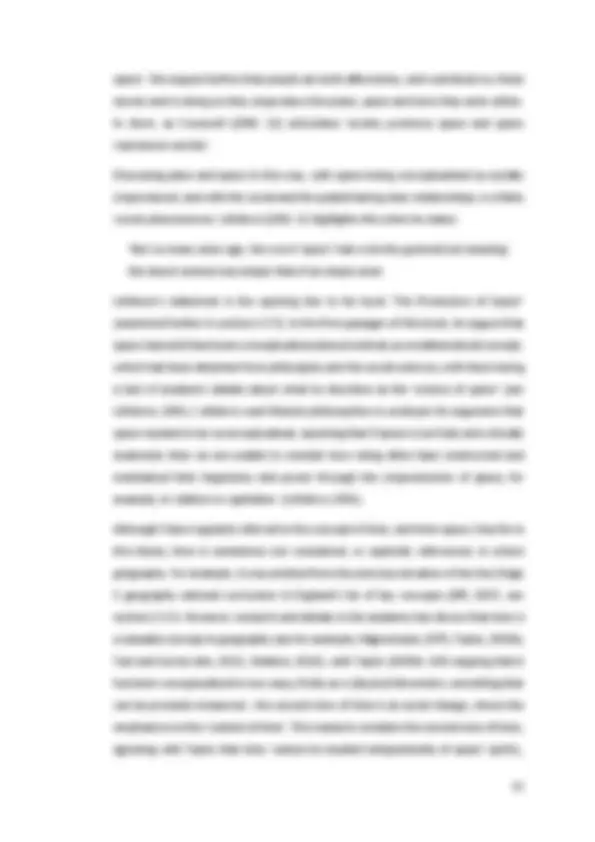
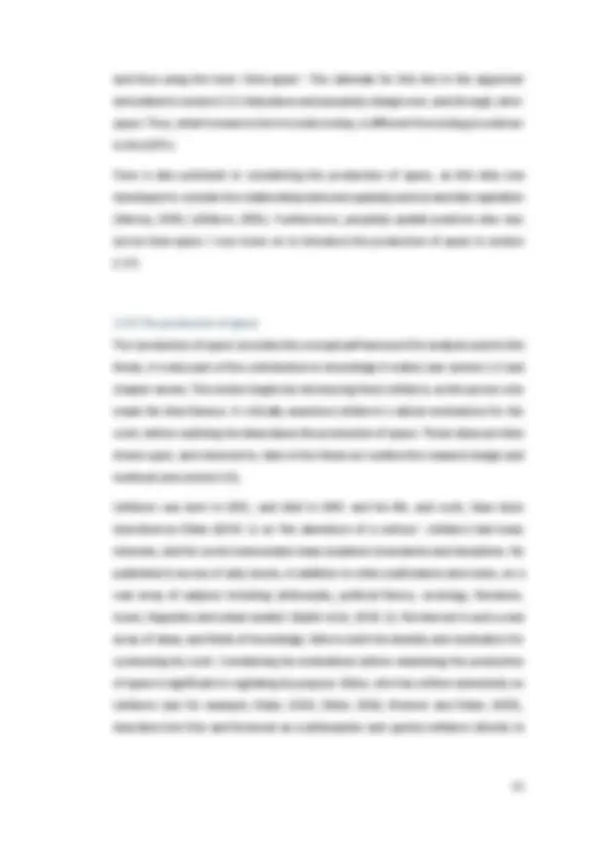
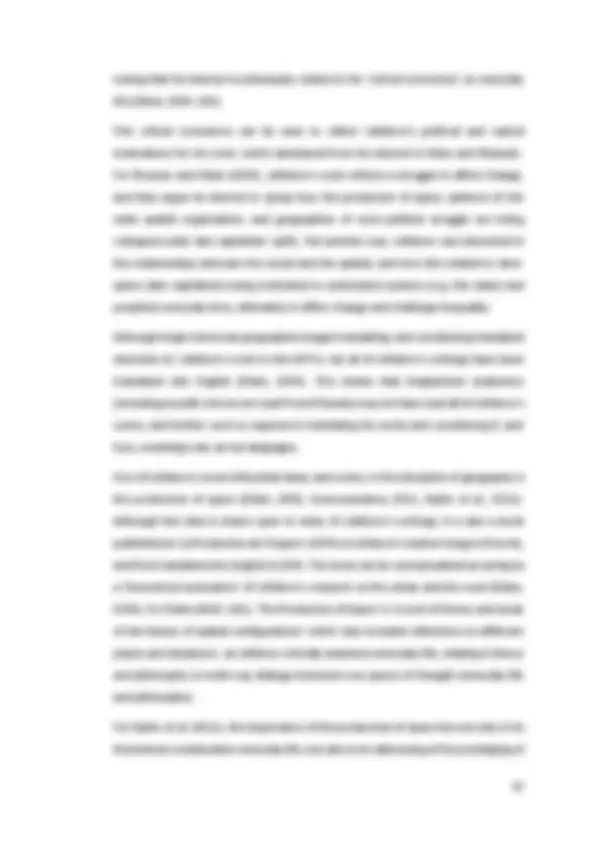
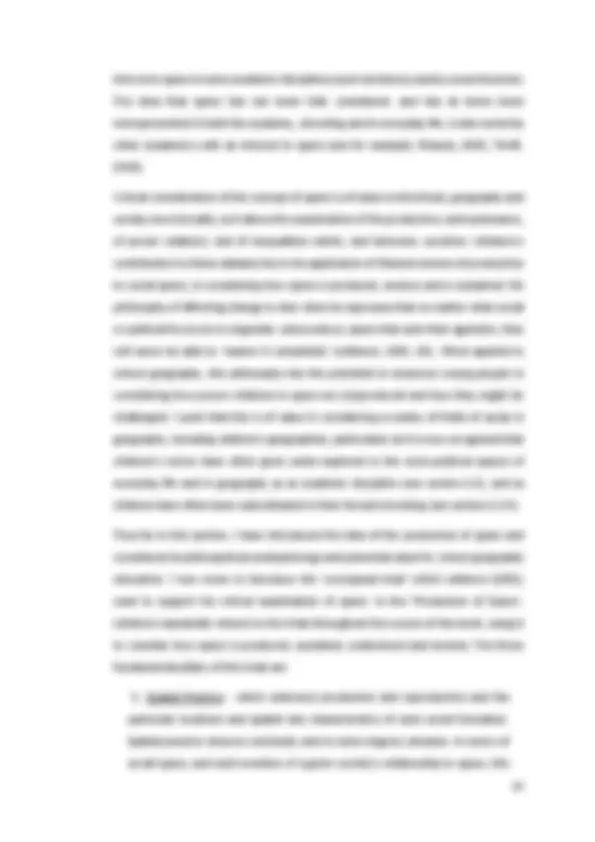
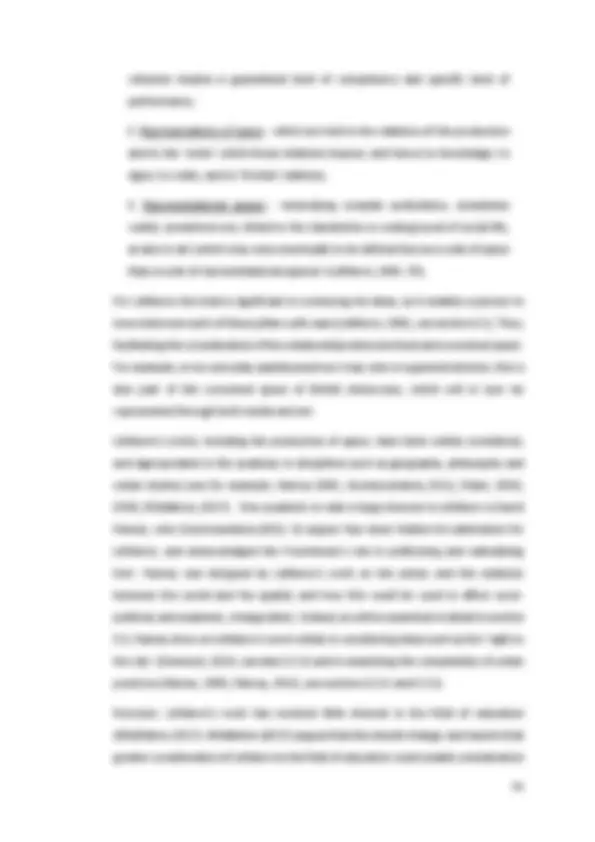
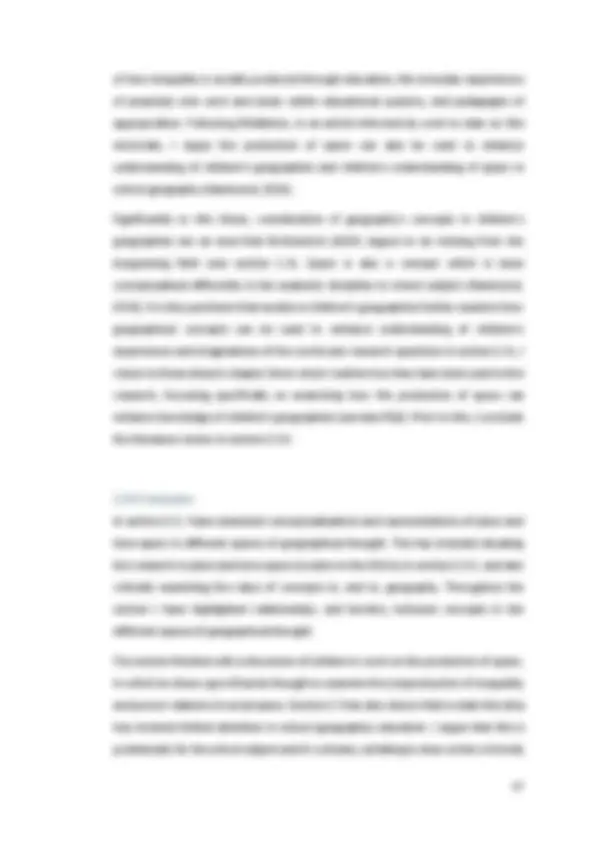


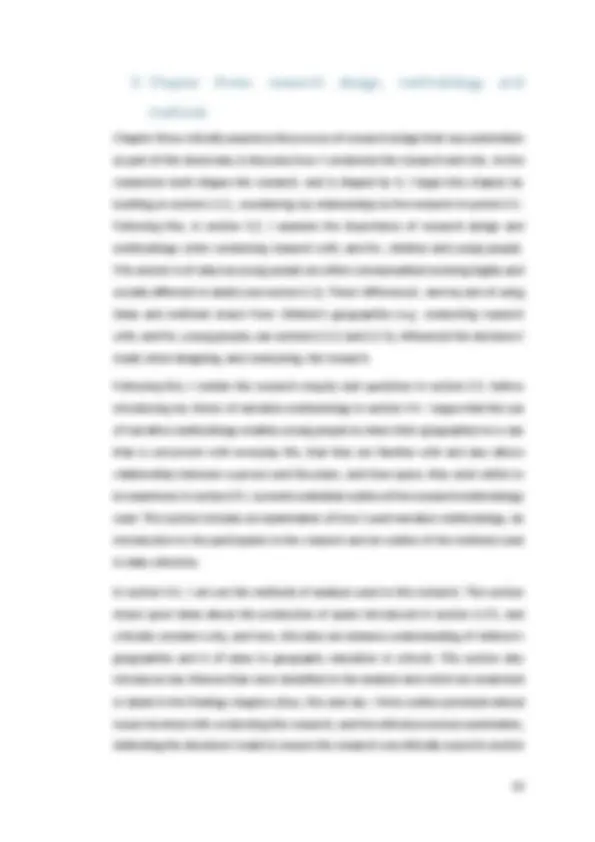
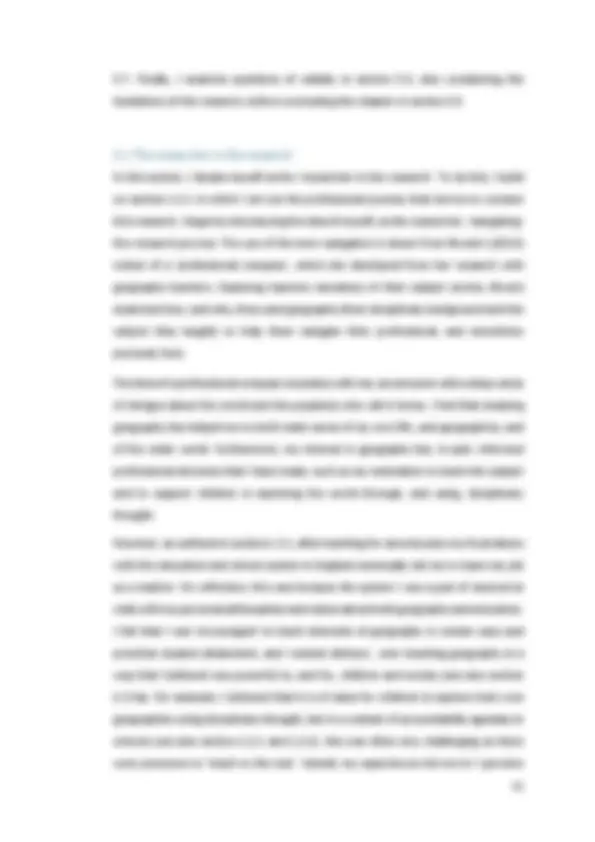
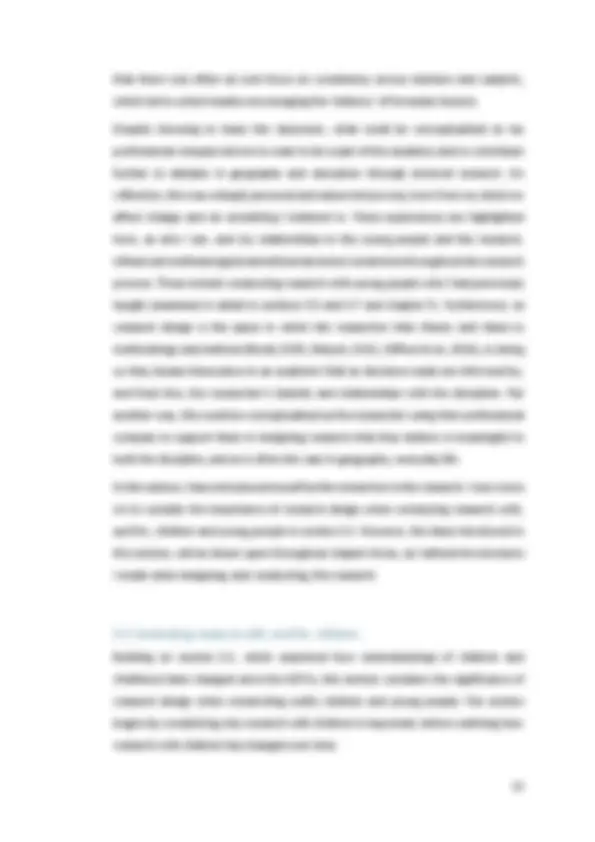
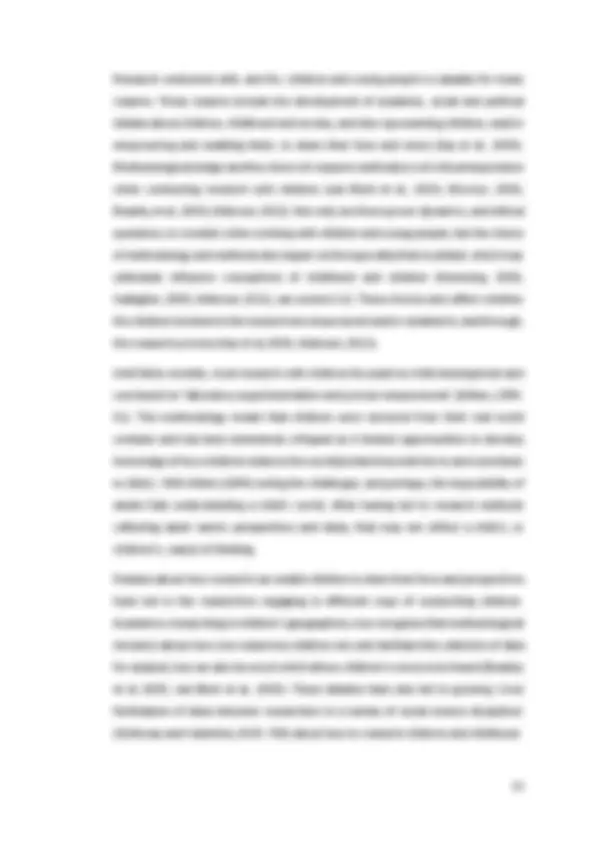

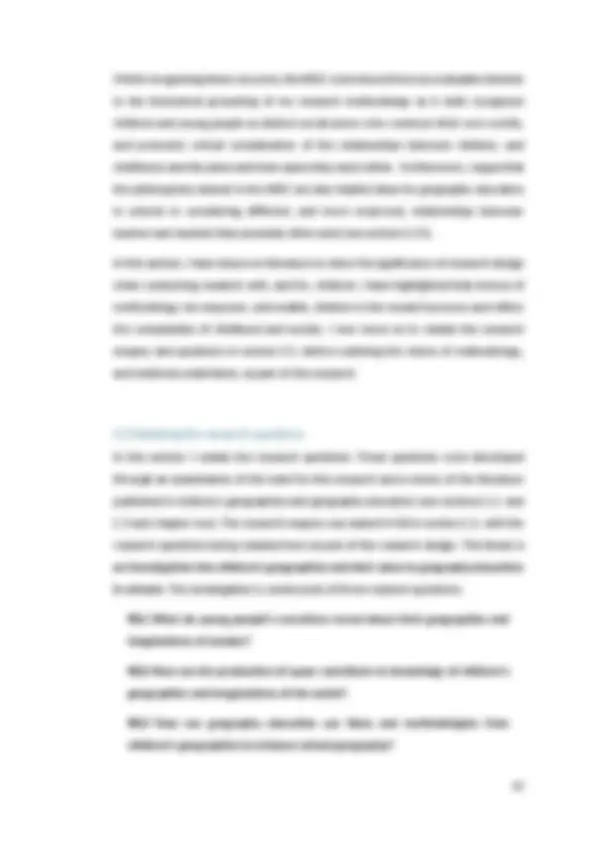
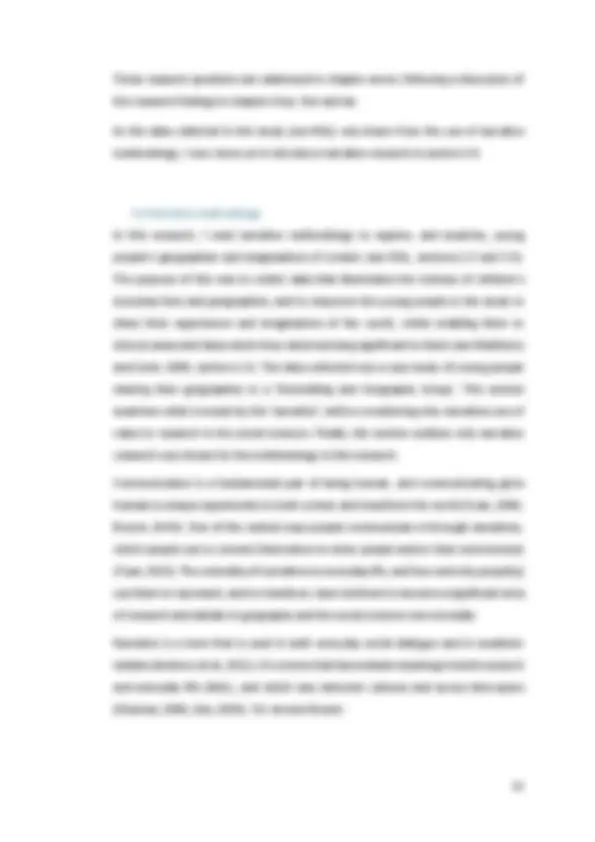
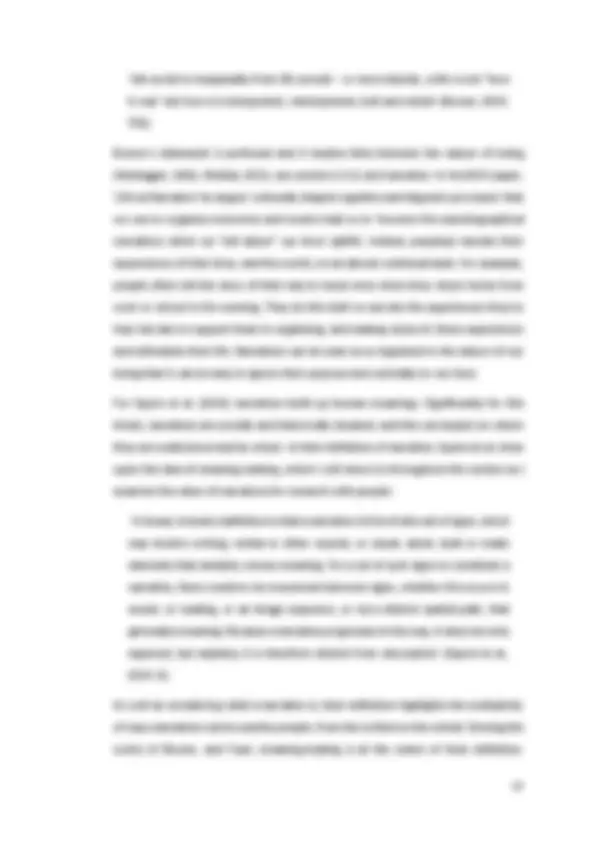
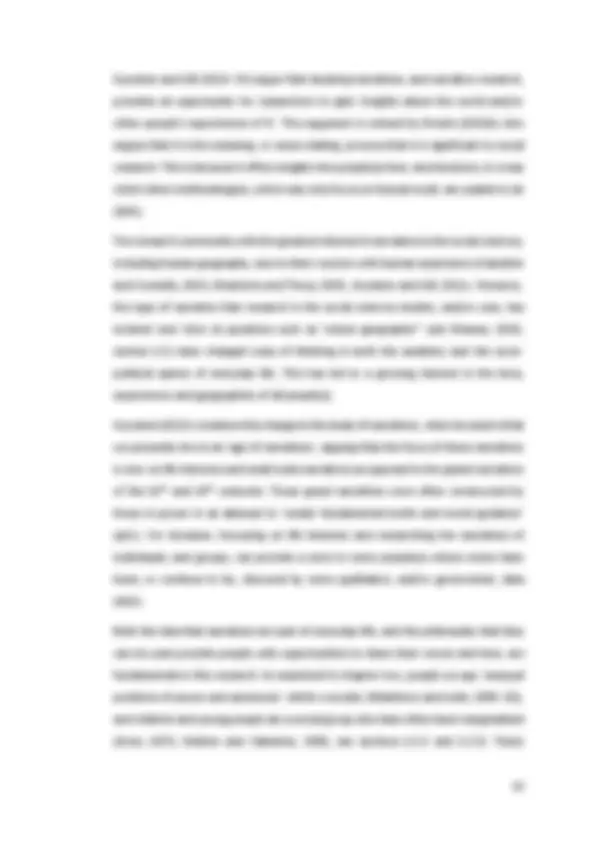
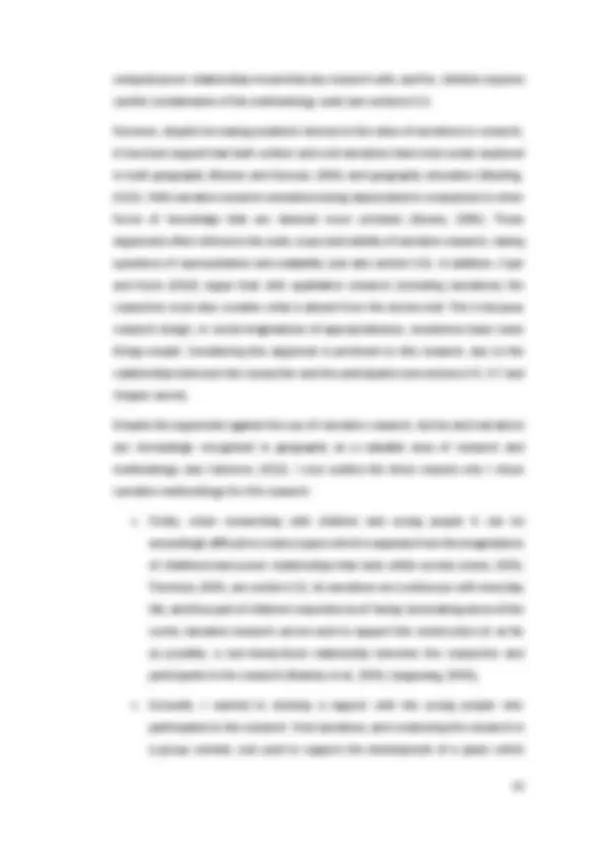
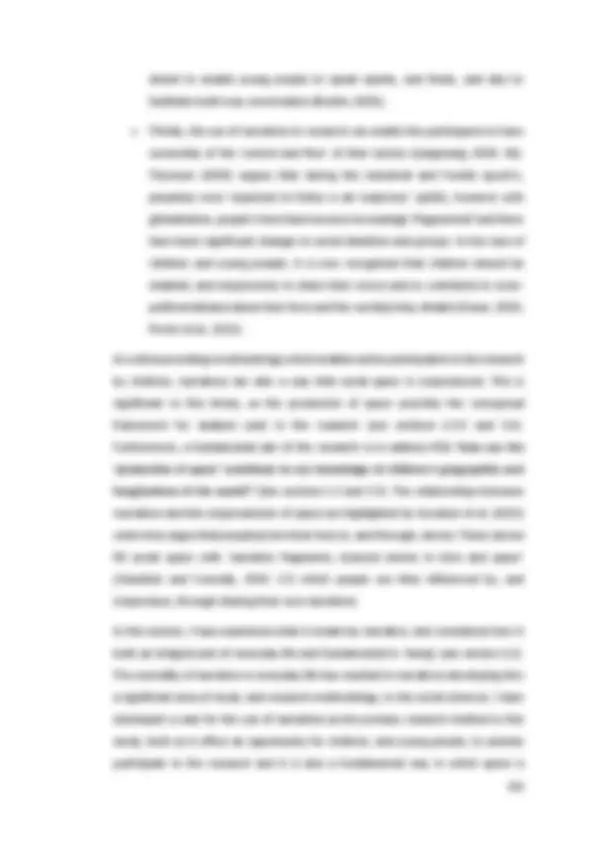


Study with the several resources on Docsity

Earn points by helping other students or get them with a premium plan


Prepare for your exams
Study with the several resources on Docsity

Earn points to download
Earn points by helping other students or get them with a premium plan
Community
Ask the community for help and clear up your study doubts
Discover the best universities in your country according to Docsity users
Free resources
Download our free guides on studying techniques, anxiety management strategies, and thesis advice from Docsity tutors
This thesis examines the relationships and 'borders' (see Castree et al., 2007) that exist between children's geographies in the space of everyday life, and ...
Typology: Study notes
1 / 330

This page cannot be seen from the preview
Don't miss anything!





























































































Impact statement This thesis shows how children’s geographies, as both an area of academic thought, and as shared by children themselves, can be enabling to geography teachers in their ‘curriculum making’ (see Lambert and Morgan, 2010) and children in their lives and futures. Through drawing on ideas from the discipline of geography (specifically children’s geographies and the ‘production of space’ (see Harvey, 1990; Lefebvre, 1991)) the research demonstrates why, and how, it is of value to consider the child, beyond their given identity of student, in school geography. In this way, the research contributes to academic debate about the place of the child in geography education and the significance of geography education to the child. In addition to contributing to academic debate, the thesis also has the potential to have impact beyond the academy and for the findings of the research, and arguments put forward, to be used by geography teachers in schools. Through drawing on Maude’s (2016) typology of powerful knowledge, the thesis has shown the value of children’s geographies to school geography. For example, it demonstrates that providing children with opportunities to study (their own) everyday life using what Young (2008) terms ‘powerful knowledge’ has the potential to give them power over their own, everyday knowledge. To bring about impact, the research has been disseminated at both academic, and professional, conferences nationally and internationally, with papers including: Mind the Gap! Geography as a discipline, pre-university subject and as part of everyday life (NOFA, 2019, Stockholm) Children’s Geographies and the Geography Classroom (Geographical Association annual conference, 2019, Manchester) Why Explore the Production of Space in Geography Classrooms? (Royal Geographical Society annual conference, 2018, Cardiff) Young People’s Geographies: An Opportunity to Critically Consider the Relationship between “Everyday” and “Powerful Knowledge” (International Geographical Union conference, 2017, Lisbon)
Furthermore, the research has thus far resulted in two publications: Hammond, L. (forthcoming) ‘Children, Childhood and Changing Technology’ in Walshe, N. (eds.) Geography Education in A Digital World Routledge: London Hammond, L. (2019) ‘Utilising the ‘production of space’ to enhance young people’s understanding of place’ in Geography 104(1) pp28- 37
2.3.4 Place and time-space in geography as an academic discipline and school subject
Table of figures Figure 1: Spaces of geographical thought .............................................................................. 33 Figure 2: The Geography and Education nexus: as shared by the Royal Geographical Society’s Geography and Education Research Group by email to its members on 12th^ September 2019 ............................................................................................................................................... 53 Figure 3: The 'curriculum making' model: as published in Lambert and Biddulph (2014) and developed from Lambert and Morgan (2010) ....................................................................... 57 Figure 4: Adopting a capabilities approach: as shared in the GeoCapabilities electronic newsletter on 8th^ March 2016 ............................................................................................... 60 Figure 5: The reciprocal relationships between people(s), place and time-space ................ 76 Figure 6: The reciprocal relationships between place and time-space - London in a neoliberal epoch ..................................................................................................................................... 78 Figure 7: The participants in the research ........................................................................... 107 Figure 8: The process of data collection .............................................................................. 109 Figure 9: First cycle codes .................................................................................................... 116 Figure 10: David Harvey's (1990:257) 'grid of spatial practices' .......................................... 120 Figure 11: R.islam (Religion and Islam) mapped on to Harvey's 'grid of spatial practices'. 122 Figure 12: Shared and individual narratives on r.islam (religion and Islam) ....................... 122 Figure 13: The main themes which identified during data analysis .................................... 125 Figure 14: Narratives of religion and identity mapped on to Harvey's grid of spatial practices ............................................................................................................................................. 148 Figure 15: Shared and individual narratives of religion and identity ................................... 160 Figure 16: narratives of sex, sexuality, gender and identity mapped on to Harvey's grid of spatial practices ................................................................................................................... 165 Figure 17: Shared and individual narratives of sex, sexuality, gender and identity ............ 177 Figure 18: Narratives of the state and oneself mapped on to Harvey's grid of spatial practices ............................................................................................................................................. 180 Figure 19: Shared and individual narratives of the state and oneself ................................. 189 Figure 20: Narratives of voice and identity mapped on to Harvey's grid of spatial practices ............................................................................................................................................. 192 Figure 21: Shared and individual narratives of voice and identity ...................................... 199 Figure 22: Shared narratives on the theme of identity ....................................................... 201 Figure 23: Young people’s narratives of identity and the reciprocal relationships between people(s), place and time-space .......................................................................................... 204
Acronyms used o BERA – British Educational Research Association o CID - Criminal Investigations Department o CYFRG - The Royal Geographical Societies Children, Youth and Families Research Group o DBS – Disclosure Barring Service o DfE – Department for Education o DTM – Demographic Transition Model o EA – East Acton o EDL – English Defence League o GA – Geographical Association o GCSE – General Certificate of Secondary Education o GER – Geography Education Research o GTE – Geography Teacher Education o HEI – Higher Education Institute o HERG – The Royal Geographical Societies Higher Education Research Group o iGCSE – International General Certificate in Secondary Education o IGU – International Geographical Union o ITE – Initial Teacher Education o IOE – Institute of Education o ISIS – Islamic State of Iraq and Syria o KKK – Ku Klux Klan o KS – Key Stage o LSE – London School of Economics o MA – Master of Arts o MAT – Multi Academy Trust o MER – Mathematics Education Research o NGO – Non Governmental Organisations o NSSC – New Social Studies of Childhood o OED – Oxford English Dictionary o PAR – Participatory Action Research
o PhD – Doctor of Philosophy o PRU – Pupil Referral Unit o RE – Religious Education o RGS – Royal Geographical Society o RGS-IBG - Royal Geographical Society–Institute of British Geographers o RQ – Research Question o STI – Sexually Transmitted Infection o UCL – University College London o UK – United Kingdom o UN – United Nations o UNCRC – United Nations Conventions on the Rights of the Child o UNESCO – United Nations Educational, Scientific and Cultural Organisation o YPG – Young People’s Geographies
Since the 1970s, research in the academy has led to the emergence and growth of the sub discipline children’s geographies. Research in children’s geographies, and associated fields, has developed and changed understandings of children and childhood (see section 2.2). It has also critically examined and developed methodologies that can be used to work with, and research, children (Aitken, 1994; 2001; 2018; van Blerk and Kesby, 2009; Hörschelmann and van Blerk, 2012; Freeman and Tranter, 2015; see sections 2.2 and 3.2). Despite these developments in the discipline of geography, there remains much debate as to if, and how, children’s geographies should be considered in geography education in schools (see for example, Firth and Biddulph, 2009; Catling, 2011; 2014 ; Tani, 2011; Biddulph, 2012; Roberts, 2017). In the context of Finnish geography education, Tani (2011) has conceptualised these debates as both emerging from, and being reflected in, two ‘major gaps’ presently affecting school geography: o Firstly, the gap between geography as an academic discipline and geography as school subject; o Secondly, the gap between children’s ‘everyday knowledge’ and geographies, and the geography they study in school. This research seeks to explore what Tani deems ‘major gaps’ and the impacts they have, and have had, on the place of children’s geographies in school geography in England. To do this it examines the relationships between the three spaces of geographical thought that Tani highlights (everyday life, the academic discipline and the school subject). This thesis is an investigation into children’s geographies and their value to geography education in schools.
I now move on to introduce the personal journey which led me to undertake this research in section 1.2.1. 1.2.1 The need for this research: a personal journey When I began this PhD, I was working full time as geography teacher, and head of department, in a secondary school in London. Over the course of eight years, I had spent time teaching abroad (in Singapore) and in different places across the United Kingdom (UK). Geography fascinated me on both a personal and professional level. I had, and continue to have, a deep sense of intrigue and wonder about people(s) and places, always querying how they varied, and why. Although my perception of others understanding of my professional role (including school leaders) was to teach children geography, and I understood this to be an important part of my job, I also had intrinsic interest in the children I taught. Children would tell me about their geographies, imaginations and experiences of the world, both in geography lessons, but also as their tutor and/or when we engaged in informal conversation outside of the classroom. Through interactions with children, and also through discussions with colleagues and my experiences of the education system in England more broadly, I began to question the relationships between children’s everyday lives, and geographies, and their formal education. The main focus of these questions related to children’s geographies; in considering if, how and why, I drew on them in the classroom, and also in considering whether they were recognised and valued in the same way in the academic discipline and school subject. In addition, I began to question whether not considering children’s geographies in school geography, affected conceptualisations of children and childhood in schooling. These questions emerged from several inter- related experiences that I now outline: o Firstly, I noticed that children’s geographies was often absent as a distinct area of study in the curricula in the schools in which I taught. In questioning why children’s geographies were often omitted, I was reminded of Massey’s (2008) question ‘whose geography?’ This led me to consider whether both myself as a teacher, and others involved in curriculum design, from the state
to my colleagues, were sometimes privileging the geographies of some people(s) and social groups in the curricula we made and enacted. Further to this, I started to question if the under-representation, and/or consideration, of children geographies in schools, might influence both children’s sense of belonging and their conceptualisations of the world. I perceived this to be a pertinent concern, as children and their perspectives are sometimes regarded as less important than adults in mainstream social and political debates (see Skelton and Valentine, 1998; Porter et al., 2012; section 2.1). This led me to question the potential for school geography to support children in examining their own geographies, and the geographies of others. o Secondly, in a context of accountability and performativity pressures in schools (see for example, Jones and Lambert, 2018), I began to feel that there was limited time for me to explore children’s geographies in the classroom through pedagogical choices. For example, on one occasion when discussing political geography and border disputes with a Key Stage 3 class, a child related political borders to a place they called ‘front line’. Front line represented a row of shops, which the majority of the children in the class seemed to conceptualise as territorial line between two schools where children would sometimes meet and/or fight. This resulted in staff from both schools patrolling the row of shops, and surrounding area, after school to try mitigate any issues that might arise. I was both personally intrigued by the child’s comment, and also felt there was value in connecting this personal narrative, which was imbued with ideas of territory, to the political geography we were studying to support students in meaning making (see also Roberts, 2013b; 2017). However, I also felt compelled to move on with the lesson, and on this occasion I failed to explore the connections between this child’s ideas of territory and those that are prevalent in political geography. My reasoning for this ultimately lay in my perception that there was pressure to teach students a large volume of curriculum ‘content’ to